Lead Generation Tools & Software in 2025
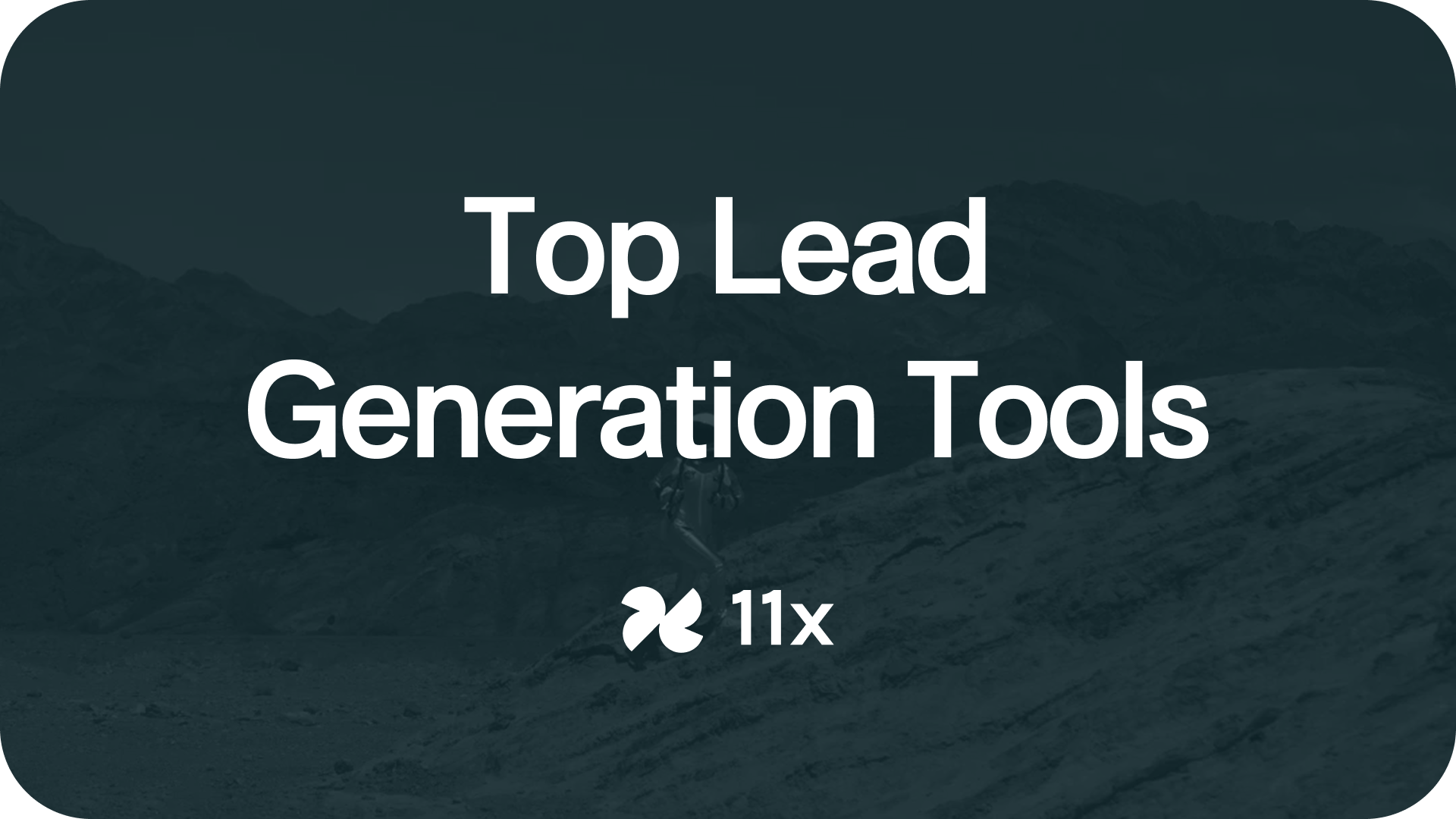
Every business needs a pipeline of qualified prospects to keep revenue growing. That’s where lead generation comes in: the process of attracting, capturing, and engaging people who could become your next customers. At 11x, we’ve seen how the right stack of lead generation tools can turn fragmented prospecting into a repeatable system for growth. GTM teams can tackle their toughest challenges with the clarity to prioritize high-fit opportunities.
This guide walks through the best lead generation tools and software in 2025. They’re grouped into categories like lead capture, automation, outbound engagement, and data enrichment. You’ll also find a comparison table to evaluate features, pricing, and fit: plus practical tips on how to choose the right solution.
What are lead generation tools and software?
Lead generation tools (sometimes called lead generation software) are digital platforms that help businesses identify, qualify, and engage prospects. They streamline critical steps in the funnel, from capturing contact details on a landing page to enriching that data with firmographics or automating follow-ups.
They’re not the same as CRMs (which manage existing customer relationships), or marketing automation suites which focus on nurturing and converting known contacts through campaigns). Instead, lead generation tools are laser-focused on filling the top and middle of the funnel with new prospects, fueling both CRMs and automation platforms with fresh opportunities.
There are two main types:
- Inbound lead generation software helps attract and capture interest via SEO, forms, webinars, or chatbots.
- Outbound lead generation software identifies prospects and initiates contact through emails, ads, or calls.
Why businesses need lead generation software
The right lead generation tools make growth faster and more predictable:
- Efficiency – Capture leads automatically instead of relying on manual data entry.
- Quality – Enrich and score leads so sales teams spend time on high-fit prospects.
- Integration – Sync data across your CRM, marketing, and sales stack without silos.
- Pipeline growth – A steady stream of qualified leads translates to more opportunities and higher conversion rates.
Without dedicated lead generation software, businesses often waste time chasing low-quality leads or miss opportunities that competitors are already acting on.
How to choose the right lead generation tool
Not every business needs the same stack. The right choice depends on your size, motion, and growth priorities. Here’s what to weigh:
- Budget and pricing model – Evaluate subscription costs, contract length, and ROI. SMB-friendly tools often offer free tiers or low monthly plans, while enterprise-grade platforms bundle advanced features at higher annual commitments.
- Inbound vs. outbound focus – Inbound tools excel at capturing and nurturing interest through landing pages, chatbots, webinars, and SEO-driven forms. Outbound platforms prioritize building lists, verifying contacts, running cold email sequences, and orchestrating ABM campaigns. Decide whether your growth strategy leans toward attracting warm leads or proactively reaching into target accounts.
- SMB vs. enterprise fit – Lightweight tools (like Hunter or Calendly) give smaller teams fast wins, while enterprise solutions (like RollWorks or Clearbit) integrate deeply into complex, multi-channel GTM motions.
- Integrations – Check how well the tool connects with your CRM, marketing automation, and sales engagement platforms. Native integrations save time; weak ones lead to data silos.
- Automation and AI depth – Look for features like AI-driven enrichment, personalized sequencing, or workflow automation. Stronger automation reduces manual touches and lets teams focus on strategy.
Most teams will see the best results by combining categories: capture tools to bring prospects in, automation to nurture them, outbound engagement to expand reach, and enrichment to keep data clean and actionable.
Comparison table: Top lead generation tools
With dozens of platforms on the market, it’s useful to see how they stack up side by side. The table below outlines core features, starting prices, and best-fit use cases so you can quickly compare options before diving deeper into the categories.
HubSpot Marketing Hub
- Category: Lead capture
- Core Features: Forms, popups, CRM integration
- Pricing: Free; Paid from $20/user/mo
- Ideal User Type: SMBs to enterprise needing all-in-one inbound
Unbounce
- Category: Lead capture
- Core Features: Landing page builder, A/B testing, AI optimization
- Pricing: $74/mo
- Ideal User Type: Marketers running paid traffic campaigns
Intercom
- Category: Lead capture
- Core Features: AI + live chat, automation, routing
- Pricing: $29/user/mo
- Ideal User Type: SaaS/B2B with real-time engagement needs
OptinMonster
- Category: Lead capture
- Core Features: Popups, exit-intent, lead forms
- Pricing: $7/mo
- Ideal User Type: E-commerce and content sites
Leadpages
- Category: Lead capture
- Core Features: Affordable landing page templates, forms
- Pricing: $37/mo
- Ideal User Type: SMBs/startups needing quick setup
Zapier
- Category: Automation & AI
- Core Features: Workflow automation, integrations, AI add-ons
- Pricing: Free; Paid from $20/mo
- Ideal User Type: SMBs/teams connecting multiple tools
ActiveCampaign
- Category: Automation & AI
- Core Features: Email automation, CRM, lead scoring
- Pricing: $15/mo
- Ideal User Type: SMBs scaling nurture campaigns
Keap (Infusionsoft)
- Category: Automation & AI
- Core Features: Sales funnels, follow-ups, invoicing
- Pricing: $249/mo
- Ideal User Type: Small teams needing all-in-one automation
Clay
- Category: Automation & AI
- Core Features: AI-driven prospecting + enrichment
- Pricing: ~ $149/mo
- Ideal User Type: B2B outbound sales teams
Hunter
- Category: Outbound engagement
- Core Features: Email finder, verification, cold outreach
- Pricing: Free; Paid from $34/mo
- Ideal User Type: Small teams/SDRs starting outbound
Lemlist
- Category: Outbound engagement
- Core Features: Cold email sequencing, personalization
- Pricing: $59/mo
- Ideal User Type: SDR/BDR teams running multistep outreach
CallPage
- Category: Outbound engagement
- Core Features: Instant callback widget, lead capture
- Pricing: $31/mo
- Ideal User Type: SMBs needing fast inbound-to-outbound connect
Dealfront (Leadfeeder)
- Category: Outbound engagement
- Core Features: Visitor tracking, ABM targeting, sales triggers
- Pricing: $99/mo
- Ideal User Type: B2B ABM-focused orgs
RollWorks
- Category: Outbound engagement
- Core Features: Account-based marketing + outbound ads
- Pricing: Custom
- Ideal User Type: Mid-market/enterprise ABM teams
Calendly
- Category: Outbound engagement
- Core Features: Scheduling automation, calendar integration
- Pricing: Free; Paid from $10/mo
- Ideal User Type: All sales teams booking demos/calls
Clearbit
- Category: Data enrichment & scoring
- Core Features: Firmographics, enrichment, lead scoring
- Pricing: Custom
- Ideal User Type: Enterprise revenue teams needing rich data
Apollo.io
- Category: Data enrichment & scoring
- Core Features: Prospecting database, enrichment, outbound
- Pricing: Free tier; Paid from $39/mo
- Ideal User Type: SDR teams needing all-in-one outbound
Ocean.io
- Category: Data enrichment & scoring
- Core Features: AI lookalike company discovery
- Pricing: $59/user/mo
- Ideal User Type: B2B teams targeting new markets
LeadFuze
- Category: Data enrichment & scoring
- Core Features: Automated list building, segmentation
- Pricing: Contact sales
- Ideal User Type: Sales/recruiting teams building lists
Demio
- Category: Other
- Core Features: Webinar hosting, branded pages, reminders
- Pricing: $42/mo
- Ideal User Type: Marketers using webinars for lead capture
SimpleTexting
- Category: Other
- Core Features: SMS campaigns, polls, and autoresponders
- Pricing: $33/mo
- Ideal User Type: SMBs/local businesses doing mobile-first outreach
Mailchimp
- Category: Other
- Core Features: Email marketing, drip campaigns, and AI content
- Pricing: $20/mo
- Ideal User Type: SMBs/mid-market running email nurture
Categories of Lead Generation Tools & Software
Lead capture tools
1. HubSpot Marketing Hub (Inbound • SMB → Enterprise)

HubSpot Marketing Hub centralizes inbound lead capture with forms, popups, chat, and landing pages that feed directly into its native CRM. Marketers can launch gated assets, progressive profiling, and simple nurture flows without engineering, while sales sees full contact history from the first touch.
Strengths include a tightly integrated stack (CRM + marketing + sales), libraries of conversion-ready templates, and robust routing that moves qualified leads to the right rep fast. It shines for SMBs and mid-market teams that want an all-in-one foundation and prefer native over stitched point tools.
Enterprises can scale into advanced segmentation, custom objects, and multi-channel campaigns, but should plan governance around contact growth and permissions to manage cost.
Best fit: inbound motions driven by content, SEO, and conversion paths. Less ideal if you require highly specialized CRO testing or you’re standardized on a different CRM and want to minimize platform overlap.
2. Unbounce (Inbound • Performance Marketing / Paid Media)
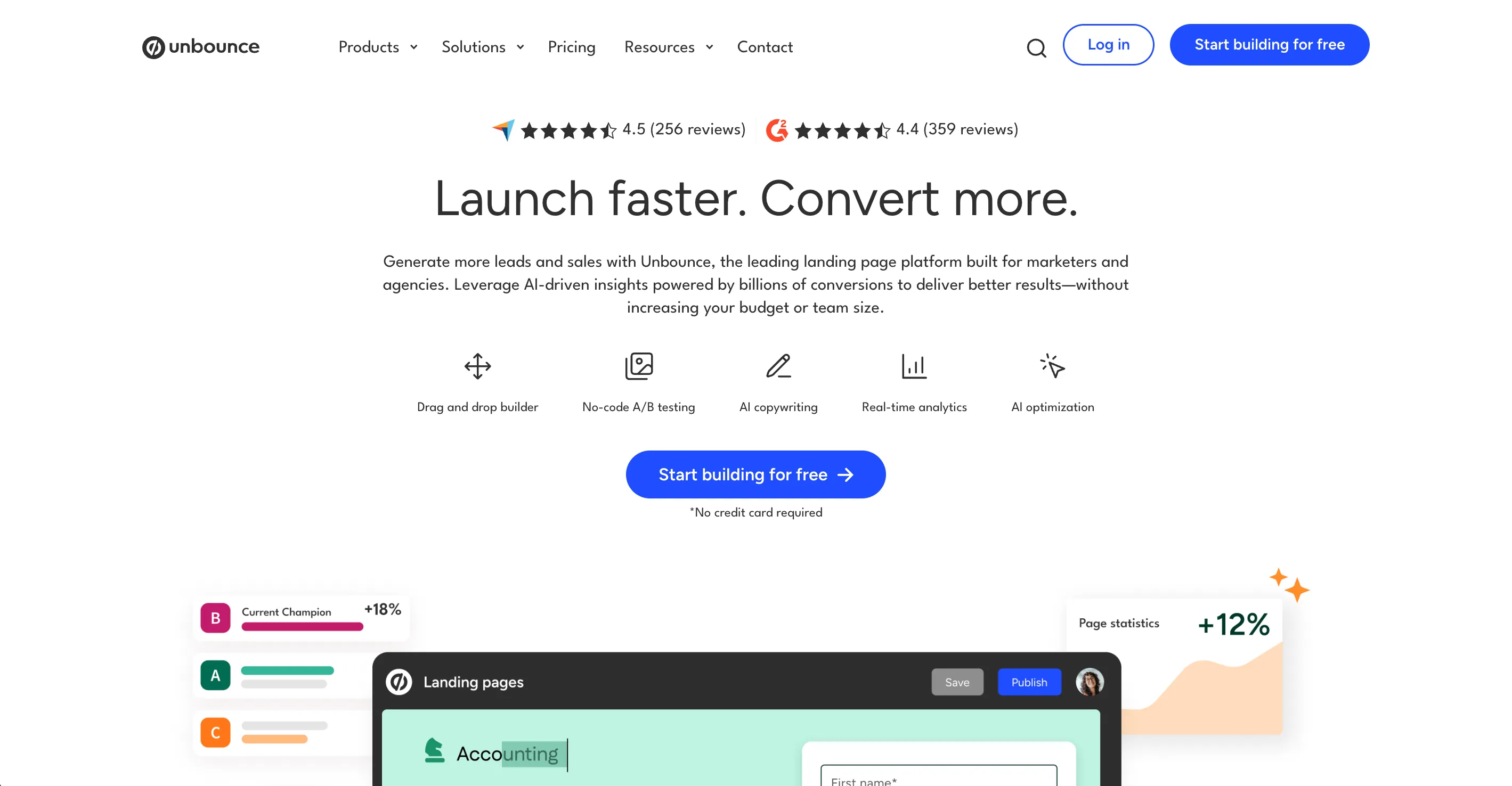
Unbounce specializes in conversion-focused landing pages and on-site prompts, giving performance marketers precise control over above-the-fold messaging, forms, and popups. Its drag-and-drop builder, A/B testing, and AI suggestions help teams iterate quickly and squeeze more conversions from paid traffic.
Unique strengths include page-level experimentation, rapid variant creation, and CRO-oriented widgets (sticky bars, popups) that don’t require dev time. Unbounce integrates with CRMs and email tools but intentionally avoids being a CRM or MAP. It works best as your dedicated “last-mile” conversion layer paired with a broader stack. Pricing is higher than basic builders, and nurture/reporting depth is intentionally light.
Best fit: marketers running PPC, paid social, and launch campaigns who need to improve CVR fast. Less ideal if your priority is sitewide personalization or if you want native email/CRM features without adding another tool.
3. Intercom (Inbound • SaaS / Speed-to-Lead)
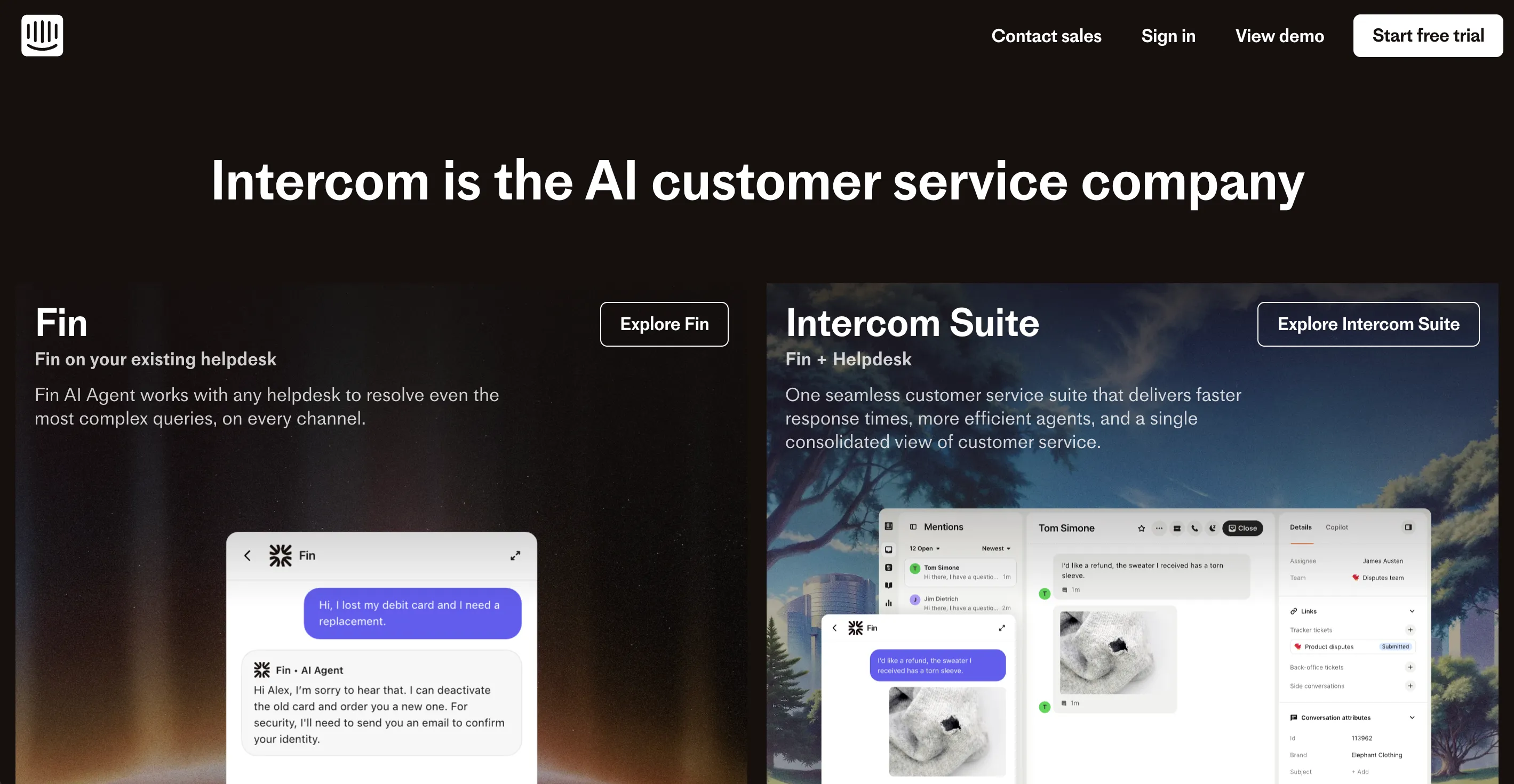
Intercom blends AI chat, live chat, and in-product messaging to capture and qualify leads in real time. Its AI bot asks smart questions and can provide instant customer support before routing website visitors directly to sales. Chatbots ask smart questions, route high-value prospects to reps (or calendars) instantly, and sync context to your CRM so follow-ups are tailored.
Strengths include rapid “speed-to-lead,” strong Slack/CRM integrations, and conversation-based qualification that feels natural to site visitors. Intercom is particularly effective for SaaS and B2B companies where fast responses materially improve win rates and where product tours/tooltips can bridge trial-to-paid.
It’s more expensive than simple form builders, and smaller teams may not need the full customer engagement suite. Also, success depends on thoughtful playbook design; over-automation can feel impersonal.
Best fit: product-led or software businesses that treat the website/app as a live sales surface. Less ideal for low-traffic sites or teams that primarily rely on static forms and long, asynchronous nurture.
4. OptinMonster (Inbound • E-commerce / Publishers)

OptinMonster turns anonymous traffic into known contacts with exit-intent popups, slide-ins, and gamified “spin-to-win” offers. Behavior-based targeting (referrer, device, scroll depth, time on page) ensures prompts appear when they’re most likely to convert, important for stores and content sites with high traffic.
Unique strengths include fast campaign launch via templates, granular display rules, and broad integrations with ESPs/CRMs so new subscribers flow straight into nurture. It’s affordable and easy for non-technical marketers, but it’s purpose-built for capture rather than deep automation or analytics. Overuse of aggressive overlays can impact UX, so thoughtful frequency capping and audience rules are key.
Best fit: e-commerce and publishers seeking more email/SMS signups from existing traffic. Less ideal if you need sitewide personalization, advanced attribution, or built-in nurture beyond handing off captured leads to downstream tools.
5. Leadpages (Inbound • SMB / Solo Marketers)
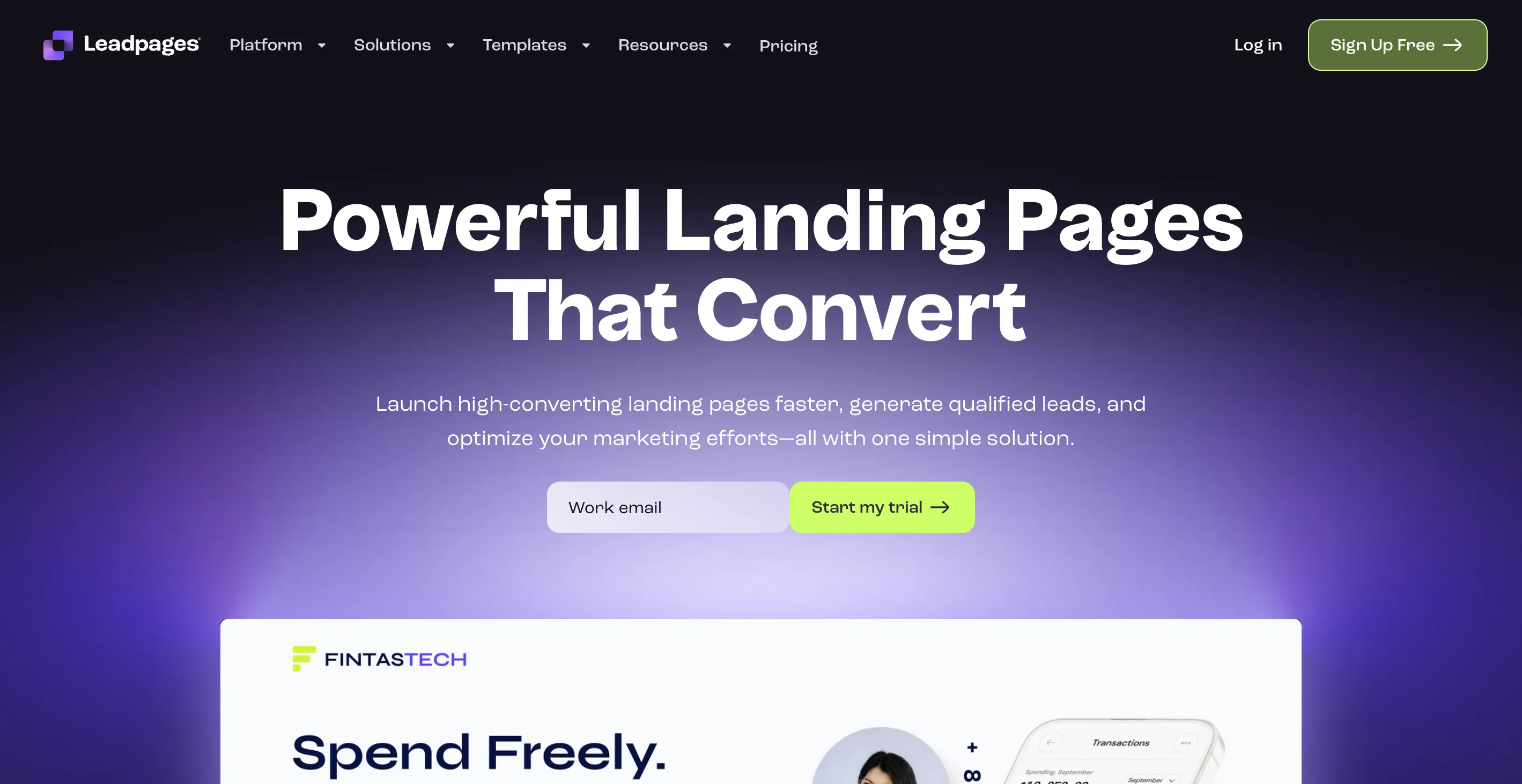
Leadpages offers cost-effective landing pages, alert bars, and pop-ups with an emphasis on speed and simplicity. Non-technical users can publish high-converting pages quickly using templates, drag-and-drop editing, and built-in form capture that connects to common ESPs/CRMs.
Strengths include predictable pricing, unlimited page publishing, and easy launch workflows for promos and webinars. Compared to premium CRO platforms, testing and AI optimization are lighter, and analytics focus on essentials, great for early-stage teams but limited at scale. Leadpages also supports payments and checkouts for simple offers, helping small businesses convert without extra plugins.
Best fit: SMBs, creators, and startups that need to “ship pages now” and keep costs low. Less ideal for teams seeking advanced experimentation, custom components, or deep collaboration features often found in higher-end CRO tools.
Automation & AI lead generation tools
6. Zapier (Inbound + Outbound • SMB → Mid-Market)
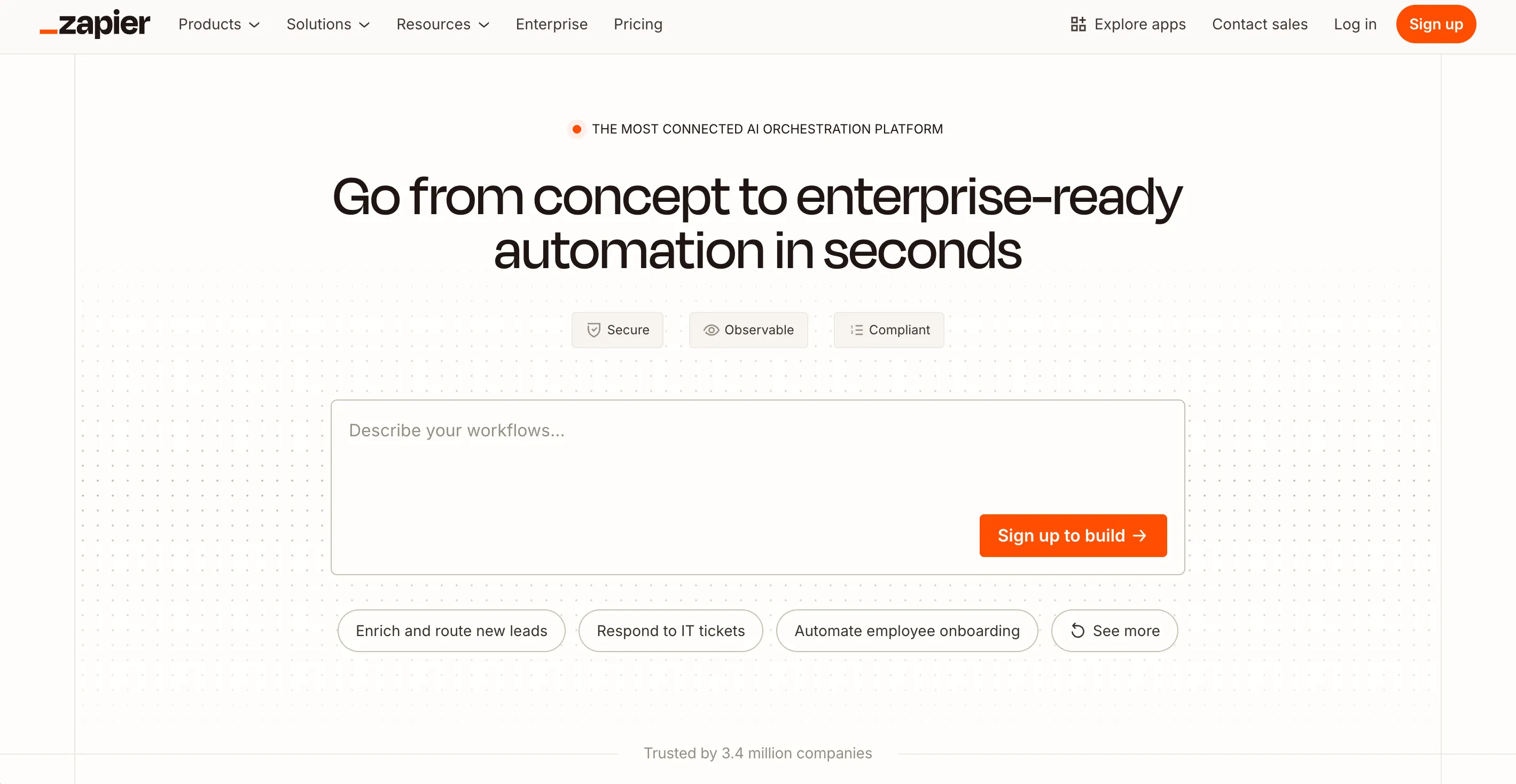
Zapier is the glue of modern GTM stacks, automating lead flows across thousands of apps. Typical plays, for example, are pushing form fills to your CRM, enriching with a data source, notifying Slack, create tasks, and kicking off email sequences. It connects systems rather than analyzing them, so teams often pair Zapier with a MAP or intelligence layer. At higher volumes, consider task usage and error handling to keep costs predictable and automations reliable.
Best fit: SMB to mid-market teams, stitching point tools into a cohesive funnel fast. Less ideal for enterprises that prefer native, governed integrations in a single platform or require fine-grained data governance beyond app-level scopes.
7. ActiveCampaign (Inbound + Outbound • SMB / Mid-Market)
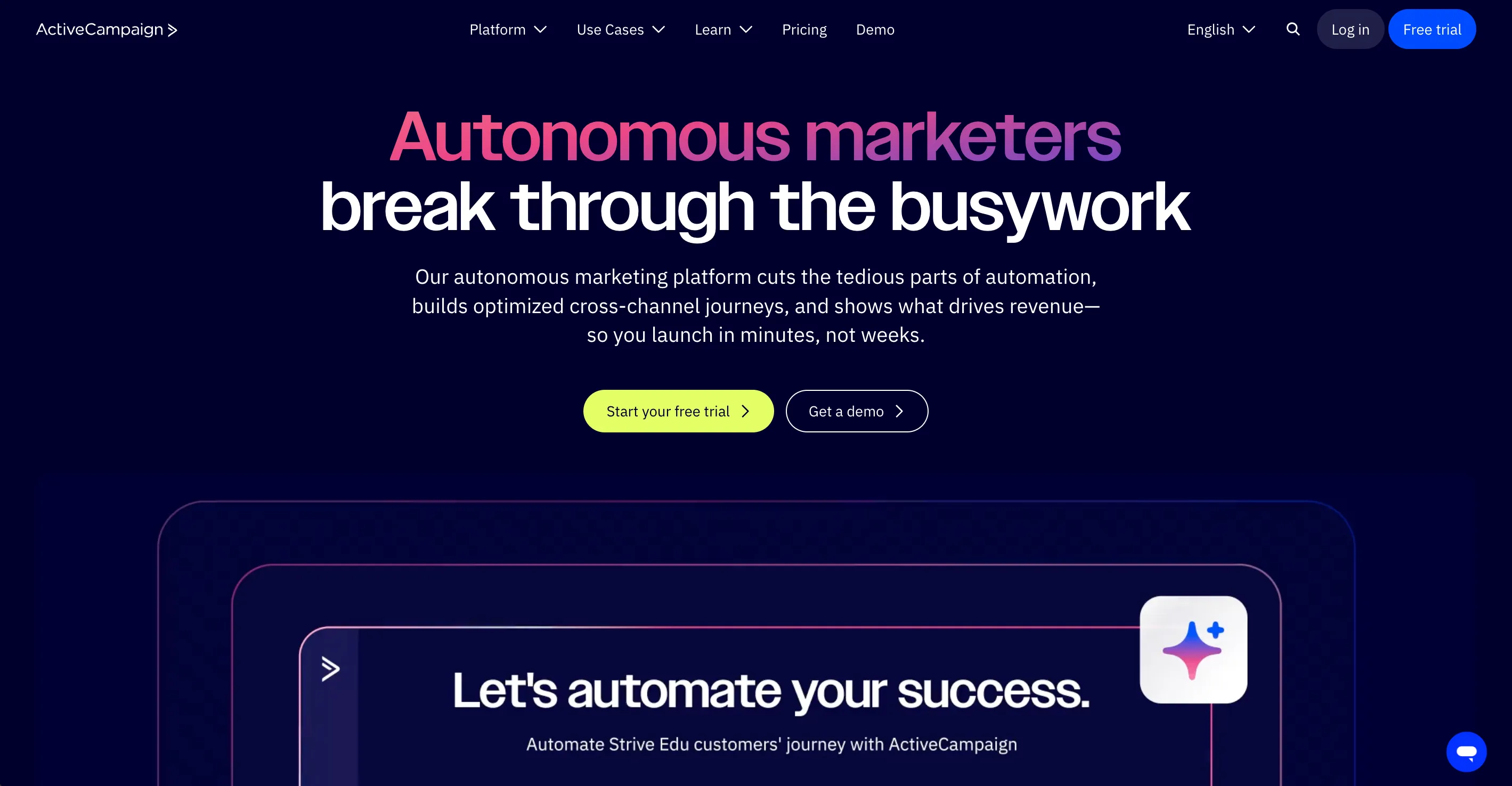
ActiveCampaign combines email automation, lightweight CRM, and lead scoring to nurture prospects from first touch through handoff. Marketers build multi-step automations triggered by behavior (opens, clicks, page views) and firmographic cues, then route qualified contacts to sales with context attached.
Strengths: an intuitive visual automation builder, robust segmentation, and strong deliverability for lifecycle email. It’s more affordable than enterprise marketing clouds and faster to implement, though large organizations may outgrow reporting depth or need custom BI.
ActiveCampaign isn’t designed to run complex ABM advertising or deep web personalization on its own, but it integrates well with tools that do.
Best fit: SMB and mid-market teams that want sophisticated nurture and scoring without enterprise overhead. Less ideal if you require enterprise-grade governance, advanced cross-channel advertising orchestration, or heavy custom object modeling.
8. Keap (Infusionsoft) (Inbound + Outbound • Small Business / Services)

Keap is an “all-in-one” growth platform for small businesses that bundles lead capture, CRM, automation, appointments, invoicing, and payments. It shines when business owners want a single place to manage follow-ups and cash flow, e.g., service firms booking consultations, sending quotes, and collecting payment.
Strengths include prebuilt funnels, automated reminders, and strong contact-to-invoice workflows that reduce administrative drag. The trade-offs: onboarding can feel heavier than email-only tools, pricing starts above lightweight ESPs, and advanced analytics/reporting are more limited than dedicated BI.
Keap isn’t built for complex ABM or large, multi-team operations. However, for owner-operators and small teams, it removes tool sprawl and ensures every lead gets a timely next step.
Best fit: small businesses that value simplicity and revenue workflows as much as marketing. Less ideal for enterprises or highly customized multi-brand stacks.
9. Clay (Outbound • B2B SDR / Personalization at Scale)

Clay is an AI-powered research and enrichment platform for outbound prospecting, helping SDRs uncover insights they can turn into personalized emails at scale. It pulls signals from hundreds of sources (company sites, social, news, funding databases) to assemble detailed account/contact lists, then generates tailored icebreakers and context for each prospect.
Strengths: scalable personalization, rapid list experimentation, and workflow nodes that enrich, dedupe, and validate before pushing to your sequencer. Teams often pair Clay with tools like Lemlist or Apollo for send-execution. It excels when SDRs target high-value accounts and want to reference timely triggers in their outreach.
Limitations: setup requires thoughtful data governance and prompt design; results vary with source quality; and you’ll still need delivery infrastructure and domain health best practices.
Best fit: B2B outbound teams seeking smarter, research-driven messaging at scale. Less ideal for inbound-heavy motions or teams unwilling to invest in testing.
10. 11x (Inbound + Outbound • Mid-Market → Enterprise / Execution AI)
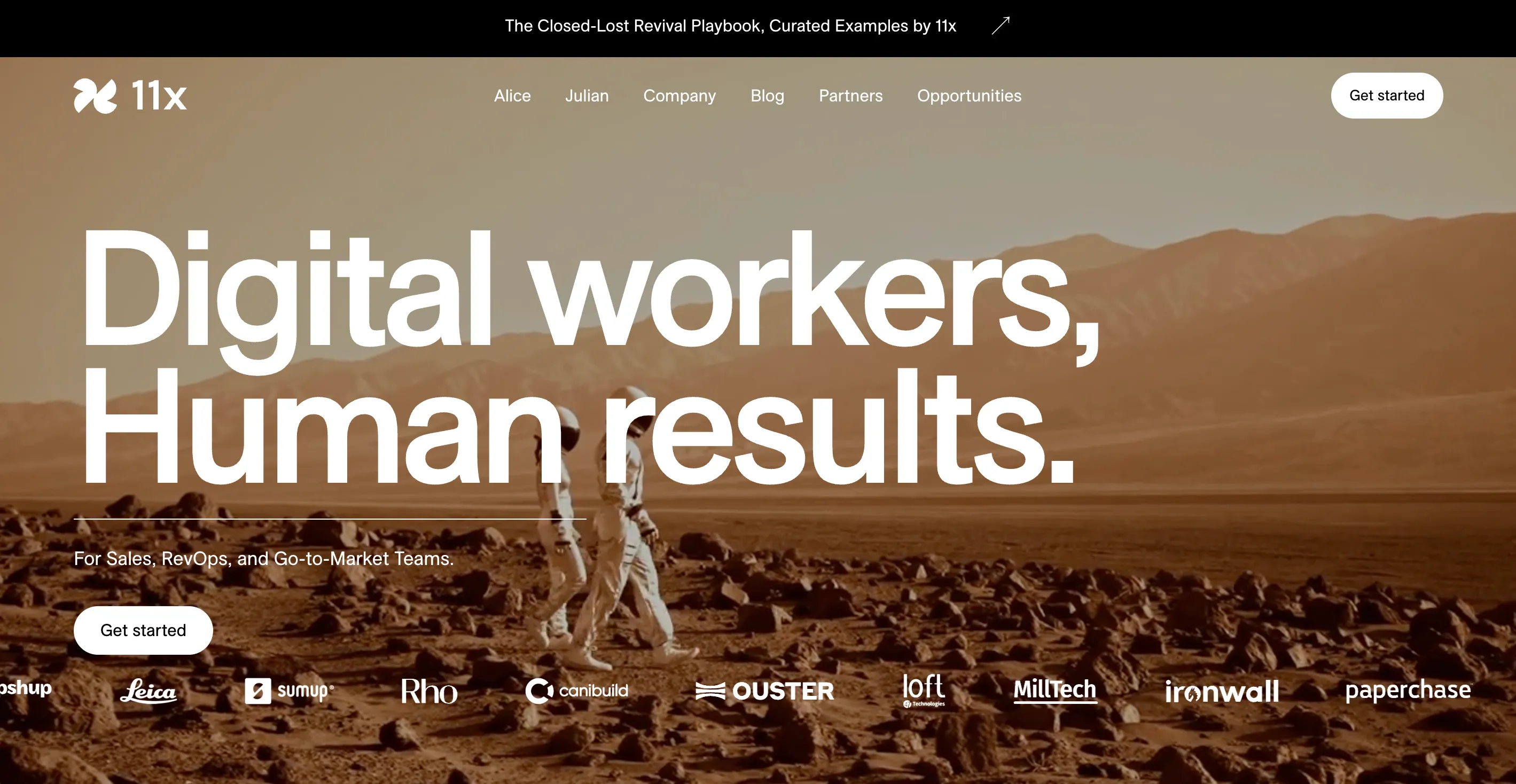
11x goes beyond data collection to execution. It combines market intelligence, AI-driven enrichment, and multichannel workflows so buying signals turn into booked meetings, without hand-stitching five tools. Agents can enrich and prioritize accounts, trigger coordinated outreach across email/LinkedIn/ads, and push context to CRM and Slack automatically.
Unique strengths: signal-to-action speed, AI recommendations grounded in your ICP, and orchestration that keeps sales, marketing, and ops aligned on the same play. It’s particularly strong for GTM teams that run both inbound and outbound and want a single layer to detect intent, personalize, and act.
Like any execution platform, success hinges on clean integrations, clear playbooks, and change management for adoption.
Best fit: mid-market and enterprise teams seeking an AI engine to operationalize lead generation end-to-end. Less ideal if you only need a narrow function (e.g., landing pages or a basic email tool).
Outbound engagement tools
11. Hunter (Outbound • Startup / SMB)
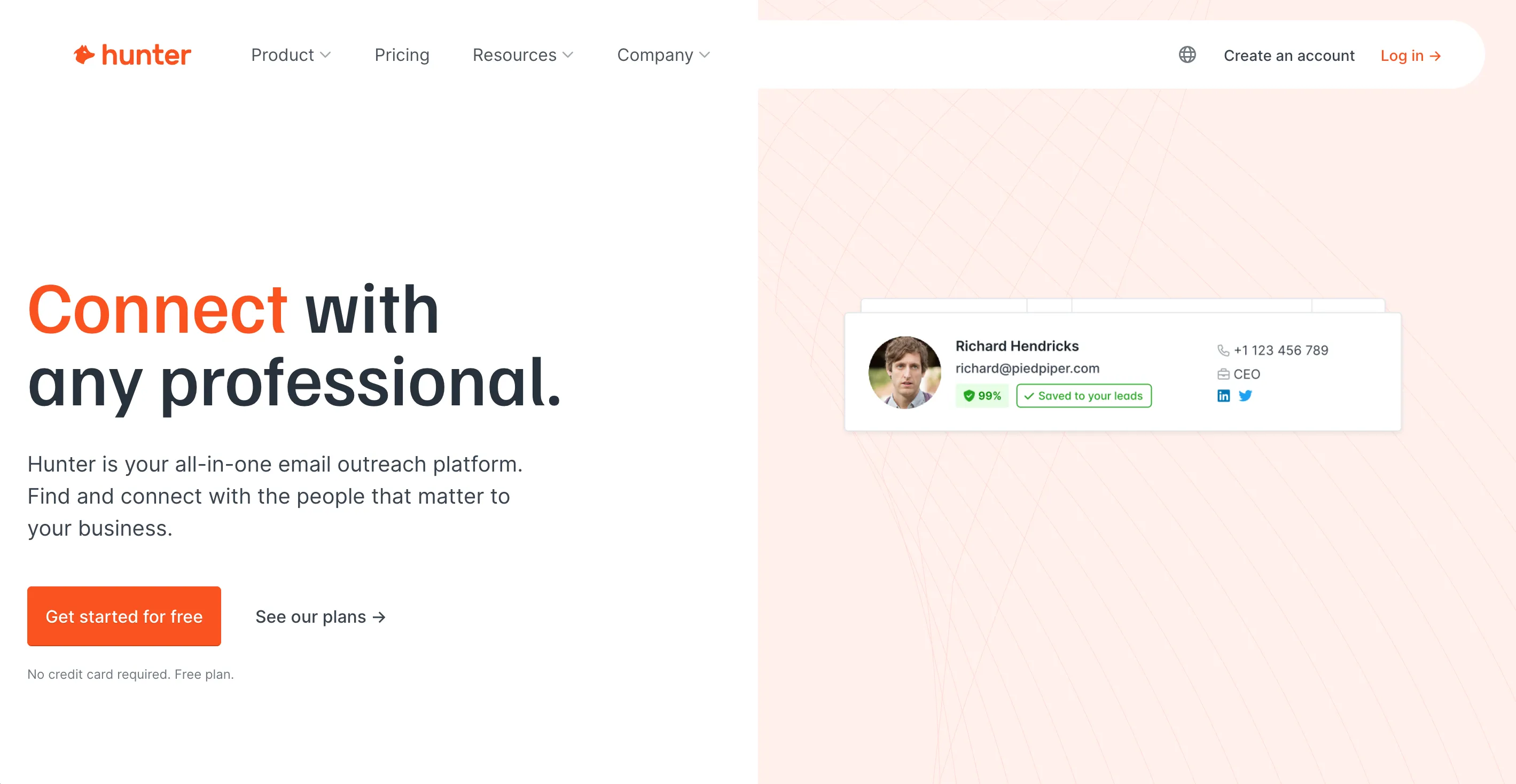
Hunter helps teams find and verify professional email addresses via domain search, pattern detection, and verification APIs. For lean SDR teams, it’s a simple way to build targeted lists and run lightweight campaigns without a full data vendor.
Strengths include ease of use, a Chrome extension for on-the-fly discovery, and verification that reduces bounce risk before sequences start.
coverage and accuracy can vary by region and role; pairing with a separate enrichment source can improve match rates. Deliverability still depends on sender domain health and list hygiene. Hunter helps you find contacts, but won’t fix poor sending practices.
Best fit: startups and SMBs beginning outbound or augmenting small lists. Less ideal for global enterprise coverage or advanced ABM programs that need deep org charts, intent, and technographics in one place.
12. Lemlist (Outbound • SDR/BDR • Personalization)
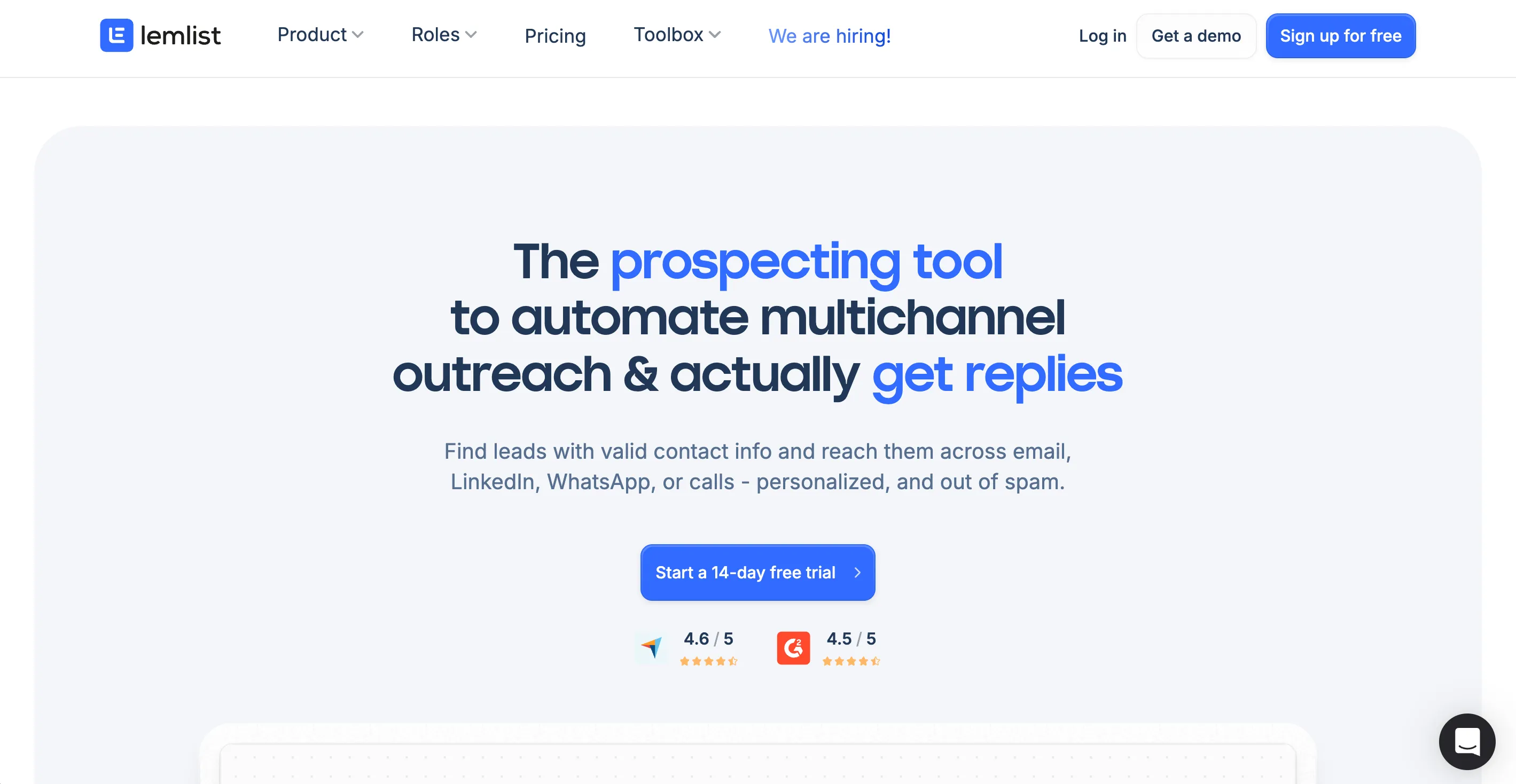
Lemlist is a multistep cold email sequencer built for personalization, enabling SDRs to send highly personalized emails as part of structured email outreach. Reps craft dynamic messages (including image personalization), branch steps based on engagement, and manage replies in shared inboxes. The platform emphasizes deliverability best practices, warmup guidance, and sender reputation monitoring alongside step logic.
Lemlist integrates with CRMs and data sources to pull custom fields for true one-to-one messaging at scale. It’s excellent for teams that prioritize creative, relevant outreach over sheer volume.
Still, success hinges on list quality and domain health; misuse (aggressive volumes, weak data) can hurt inbox placement. Lemlist doesn’t provide a massive contact database; pair it with a data/enrichment tool.
Best fit: SDR teams running thoughtful outbound to defined ICPs. Less ideal if you primarily need account-level advertising or if your org mandates sending from a centralized MAP rather than rep-owned mailboxes.
13. CallPage (Outbound • SMB • Speed-to-Call)
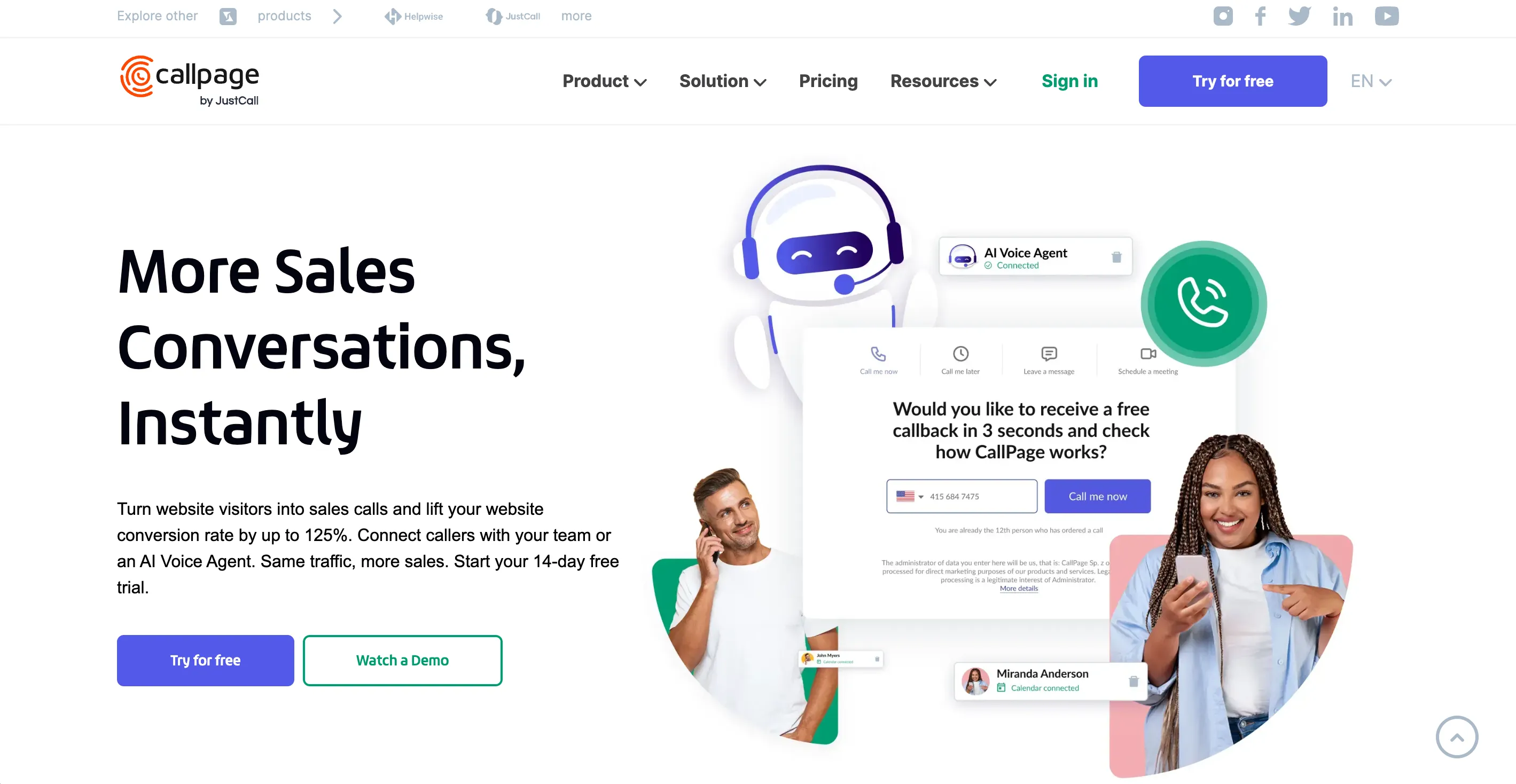
CallPage adds an instant callback widget to your site, converting high-intent visitors into live conversations within seconds. When a prospect enters a number, the system dials both sides and connects them automatically, shrinking response time and lifting connect rates.
Strengths include on-page conversion for sales-led sites, automatic call recording/analytics, and lead distribution rules to the right rep. It’s most effective for businesses with meaningful inbound traffic and a team ready to answer during business hours.
Best fit: SMBs and mid-market teams where “talk to sales now” is a key CTA (e.g., services, B2B SaaS trials, local providers). Less ideal for complex enterprise cycles where immediate calls are rare or where prospects prefer self-serve scheduling over real-time connection.
14. Dealfront (Leadfeeder) (Outbound + Inbound • B2B ABM)
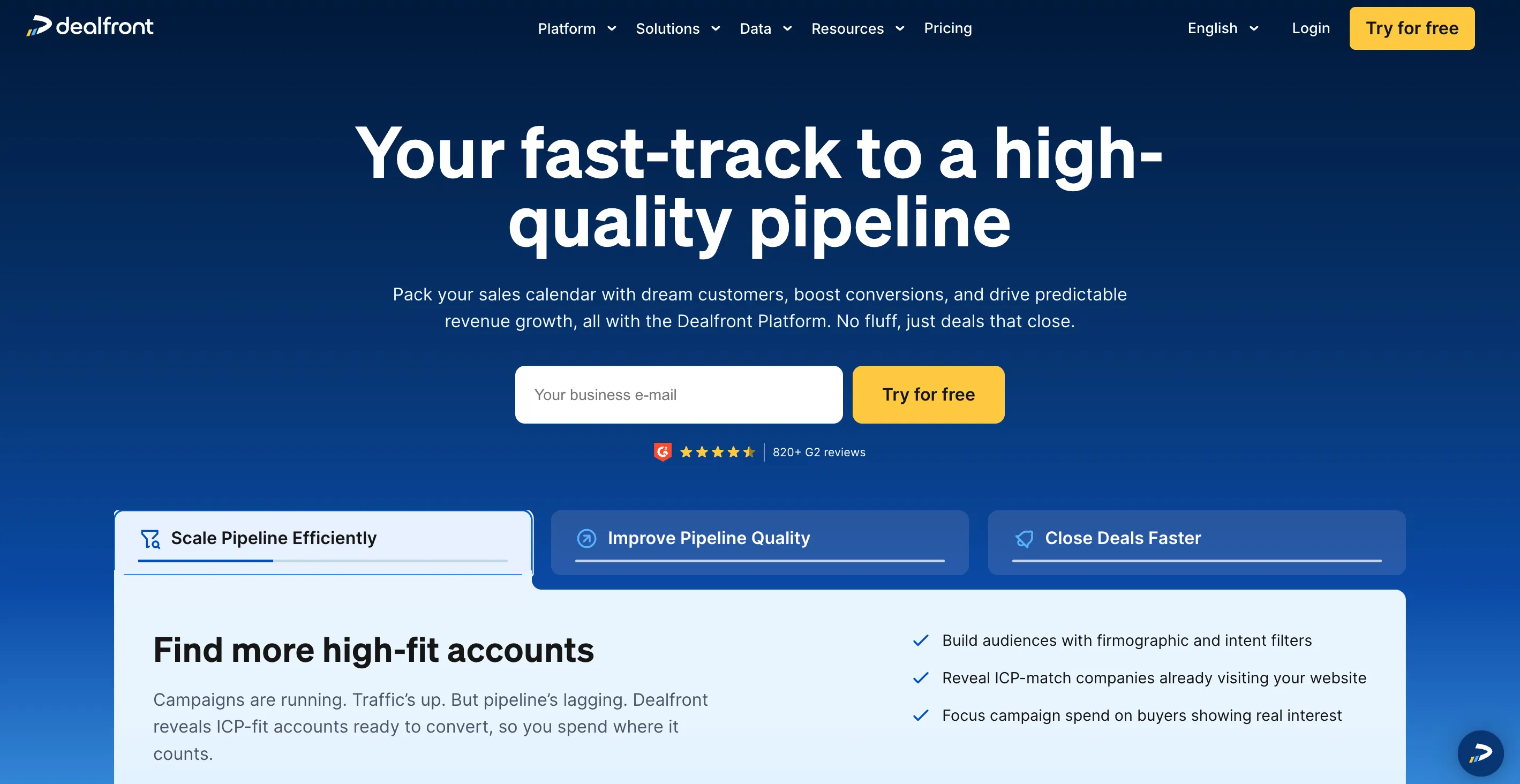
Dealfront identifies which B2B companies are visiting your website by matching IP and other signals, then surfaces sales triggers and intent data that help prioritize outreach. Reps get account-level insights (industry, size, pages viewed) to prioritize outreach and tailor messaging.
Strengths include GDPR-conscious data practices and ABM-friendly filtering that helps revenue teams focus on ICP-fit visitors. It integrates with major CRMs and sales tools so high-intent accounts route directly into plays.
Accuracy depends on traffic volume and network setups (e.g., VPNs can obscure identity), so expect the strongest results on mid-to-large traffic sites. Dealfront isn’t a sequencer or ad platform; it’s best as the detection layer in an ABM motion.
Best fit: B2B teams that want to act on anonymous traffic and sales triggers. Less ideal for low-traffic sites or organizations without a follow-up engine in place.
15. RollWorks (Outbound + Inbound • Mid-Market → Enterprise ABM)
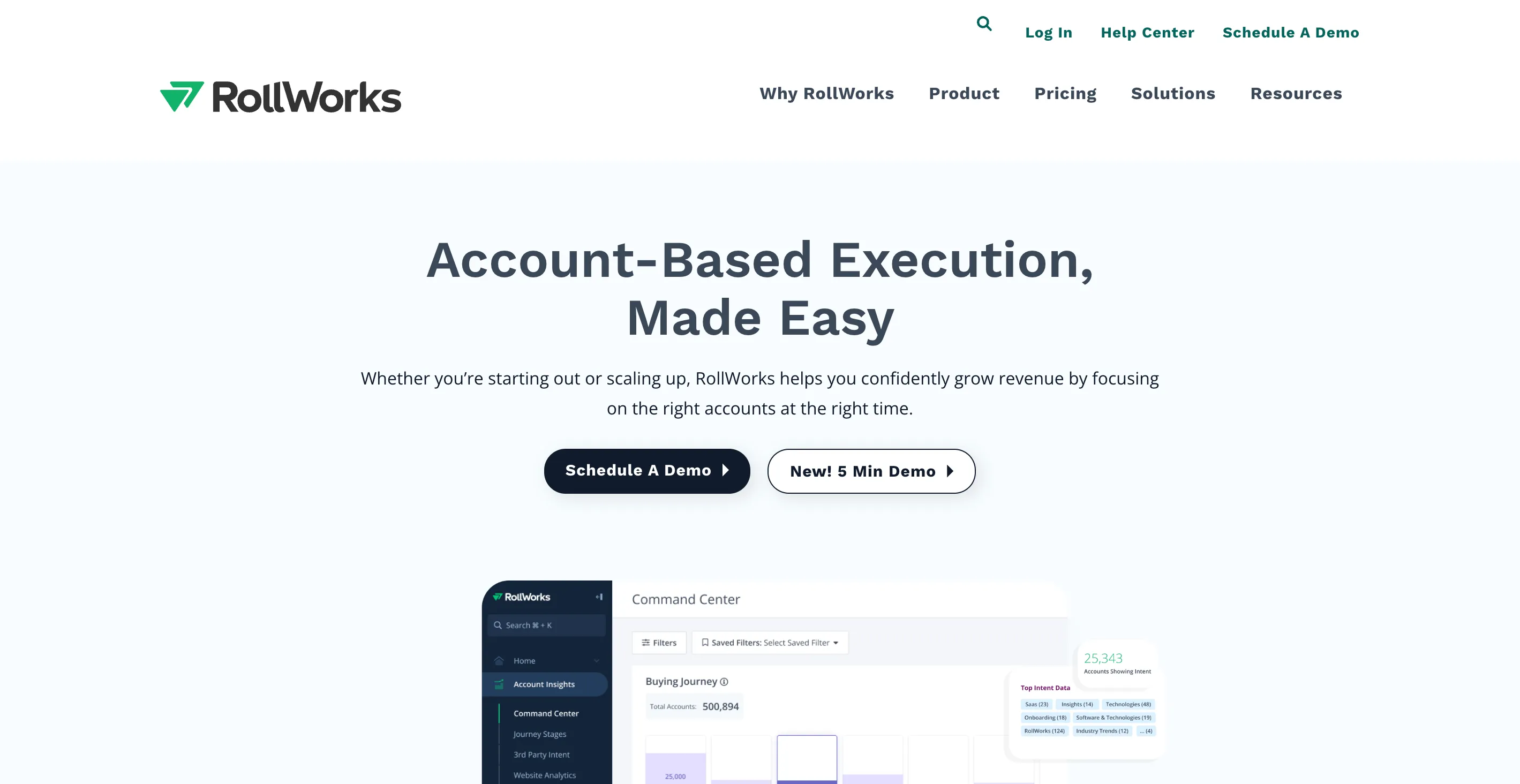
RollWorks powers account-based advertising and orchestration: define ICPs, build target lists, activate ads across channels, and measure account progression.
Unique strengths include account and contact targeting at scale, use of intent data to focus audiences, reach across display and social media, and orchestration that ties into larger marketing campaigns. It’s excellent for teams with clear ICPs, creative assets, and budget to surround buying committees beyond the inbox.
RollWorks isn’t an email sequencer or a data-only tool; it needs audience inputs, content, and a connected CRM/MAP to shine. Expect best results when paired with SDR outreach and on-site conversion paths.
Best fit: mid-market and enterprise orgs running mature ABM with dedicated budget. Less ideal for small teams seeking a simple cold email tool or those without content/creative resources to fuel campaigns.
16. Calendly (Outbound + Inbound • All Segments)
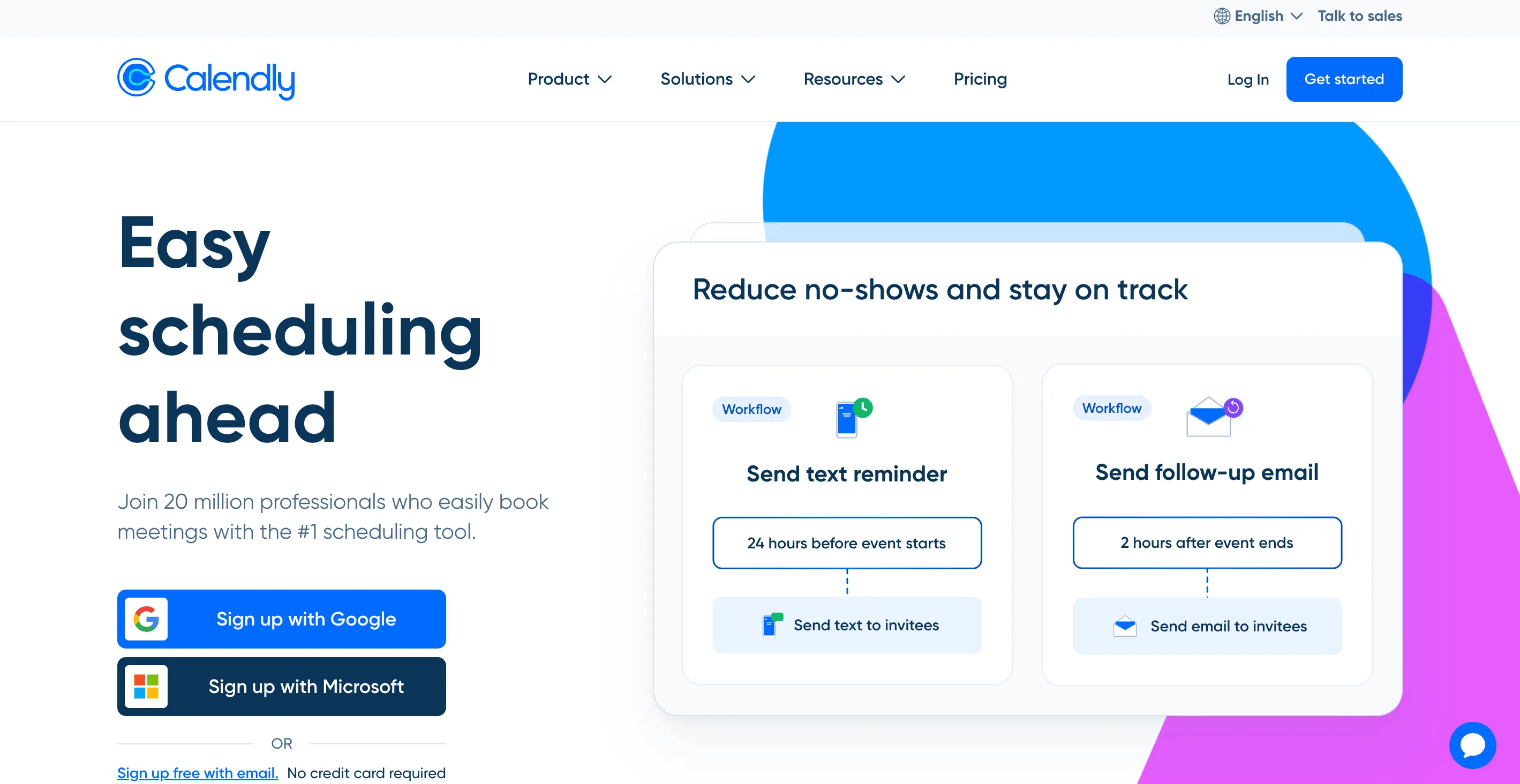
Calendly removes scheduling friction so leads can book demos at the moment of interest. Round-robin and pooled availability route meetings to the right rep; reminders reduce no-shows; and CRM integrations log activity automatically.
Strengths include fast time-to-meeting, simple embeds on landing pages or emails, and routing forms that qualify and send prospects to the best calendar.
It’s not a full lead capture or nurture platform; it’s the “yes, let’s meet” moment in your funnel. For brand-sensitive enterprises, advanced customization and SSO live on higher tiers, and complex routing may require add-ons.
Best fit: any team that books discovery or demo calls, especially SDRs and AE teams pushing prospects from email to calendar. Less ideal if meetings are rarely part of your sales motion or if you require strict enterprise scheduling inside an existing platform standard.
Data enrichment & lead scoring tools
17. Clearbit (Enrichment + Scoring • Mid-Market → Enterprise)
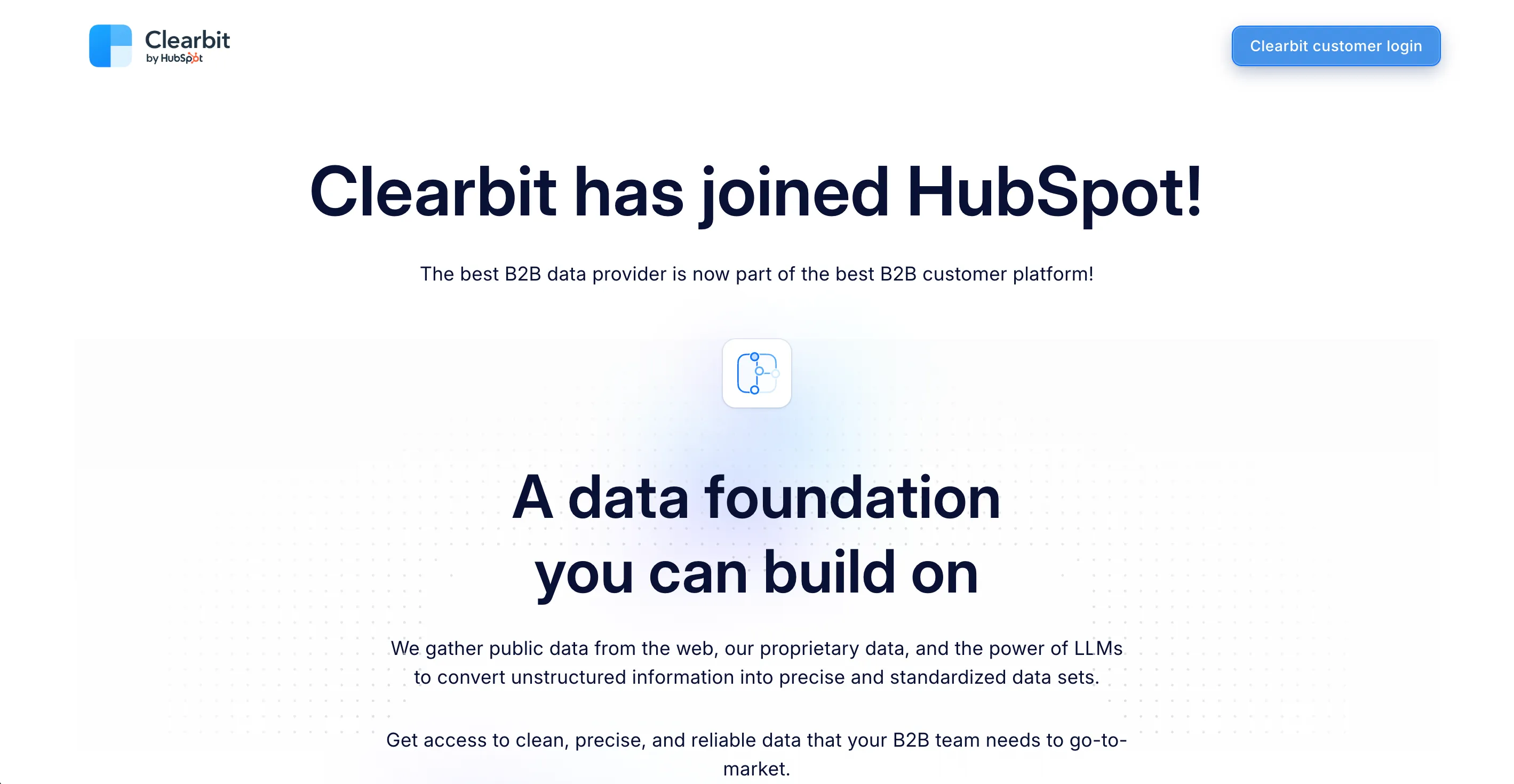
Clearbit enriches leads and accounts in real time with firmographics, technographics, and web intent, powering better scoring, routing, and personalization. Teams use it to auto-complete forms, standardize CRM data, reveal anonymous site visitors, and trigger campaigns when ICP accounts spike engagement.
Strengths include fast APIs, broad integrations, and an enrichment-first approach that improves data quality across your stack.
It’s not a full contact database for high-volume net-new prospecting; rather, it enhances the data you already have and what your site captures. Ensure CRM hygiene and well-defined ICPs to unlock the most value.
Best fit: mid-market and enterprise teams running ABM, personalization, or advanced routing where data cleanliness drives outcomes. Less ideal for small teams that mainly need a low-cost list source or those expecting a sequencer or advertising engine bundled in.
18. Apollo.io (Enrichment + Outbound • SMB → Mid-Market)
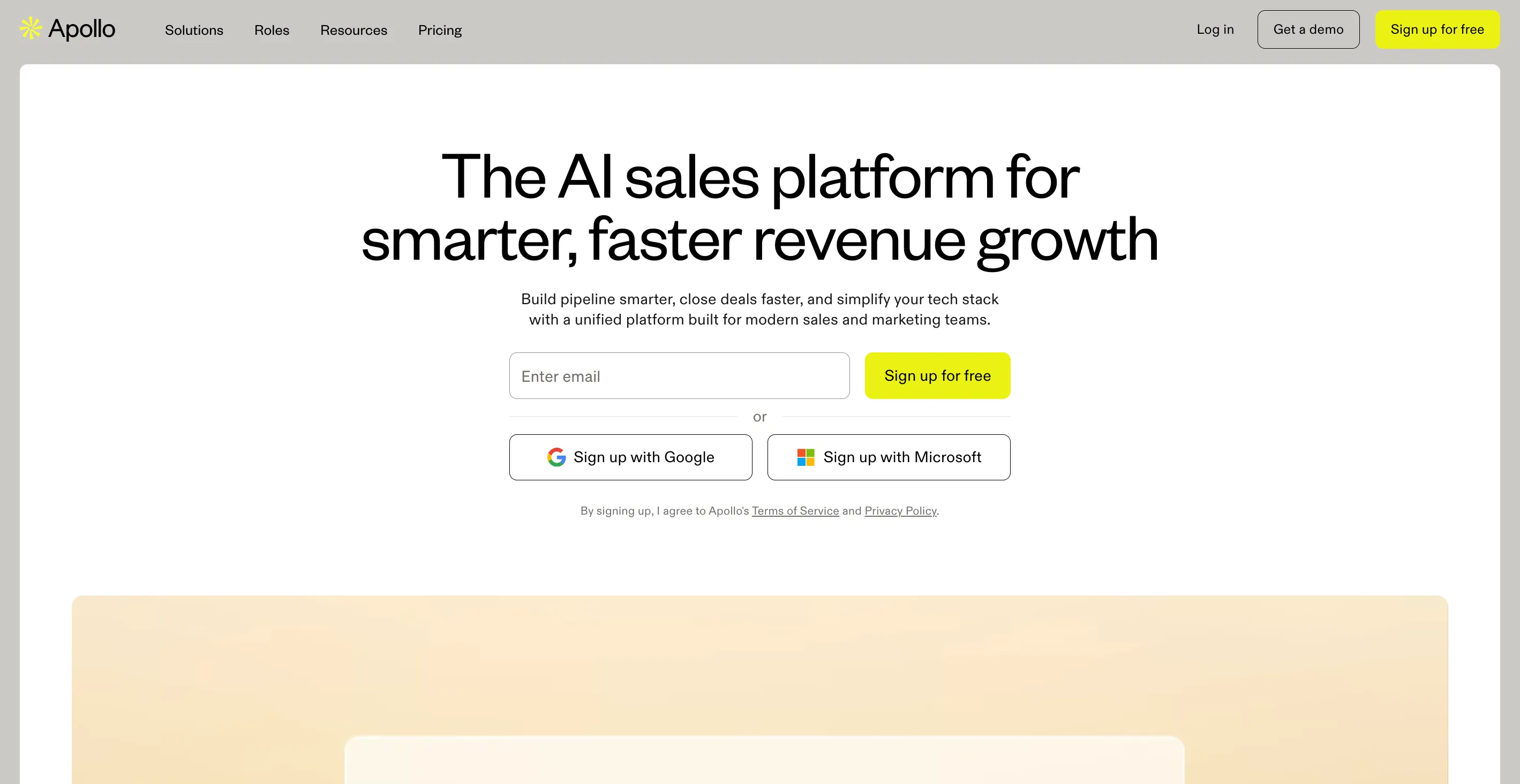
Apollo.io combines a sizeable B2B contact/company database with enrichment and a built-in sequencer, offering an all-in-one hub for SDR workflows.
Strengths include filterable prospecting (industry, tech, seniority), integrated email/call steps, and basic intent/website signals that help teams prioritize. Because enrichment, list building, and sending live together, SDRs move faster from research to outreach.
Data quality varies by region and role, so plan verification and domain health practices. Apollo won’t replace enterprise ABM ad platforms or deep analytics, but it’s a strong value for teams that want “one place to find and contact” prospects.
Best fit: SMB and mid-market sales orgs building or scaling outbound. Less ideal for enterprises with strict data governance that prefer dedicated systems for data, engagement, and analytics.
19. Ocean.io (Enrichment + Discovery • B2B Market Expansion)
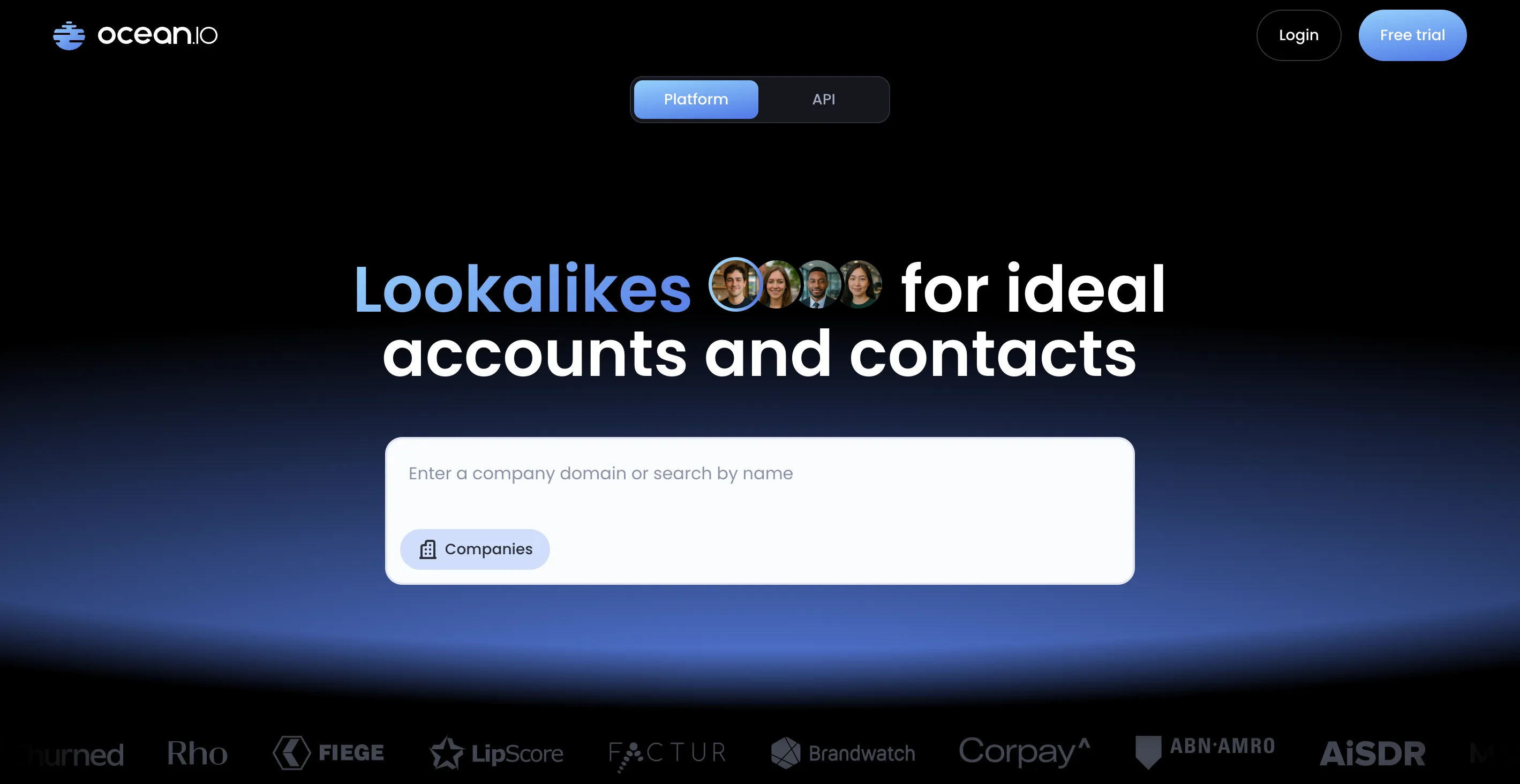
Ocean.io focuses on AI-driven “lookalike” discovery: feed it your best customers, and it surfaces companies with similar signals so you can expand thoughtfully into adjacent markets.
Strengths include website/content analysis for contextual matching and filters that refine by size, region, and tech. It’s particularly useful when entering new segments or building account lists for specialized ICPs where standard firmographics miss nuance.
You’ll still need enrichment and sequencing tools to contact discovered accounts; Ocean.io excels at who to target, not how to reach them. Quality depends on your seed list and site data quality, invest time upfront to define success signals.
Best fit: B2B teams pursuing focused market expansion and ABM list design. Less ideal for organizations that already have broad, well-covered databases and simply need more contact details.
20. LeadFuze (Enrichment + List Building • Sales + Recruiting)
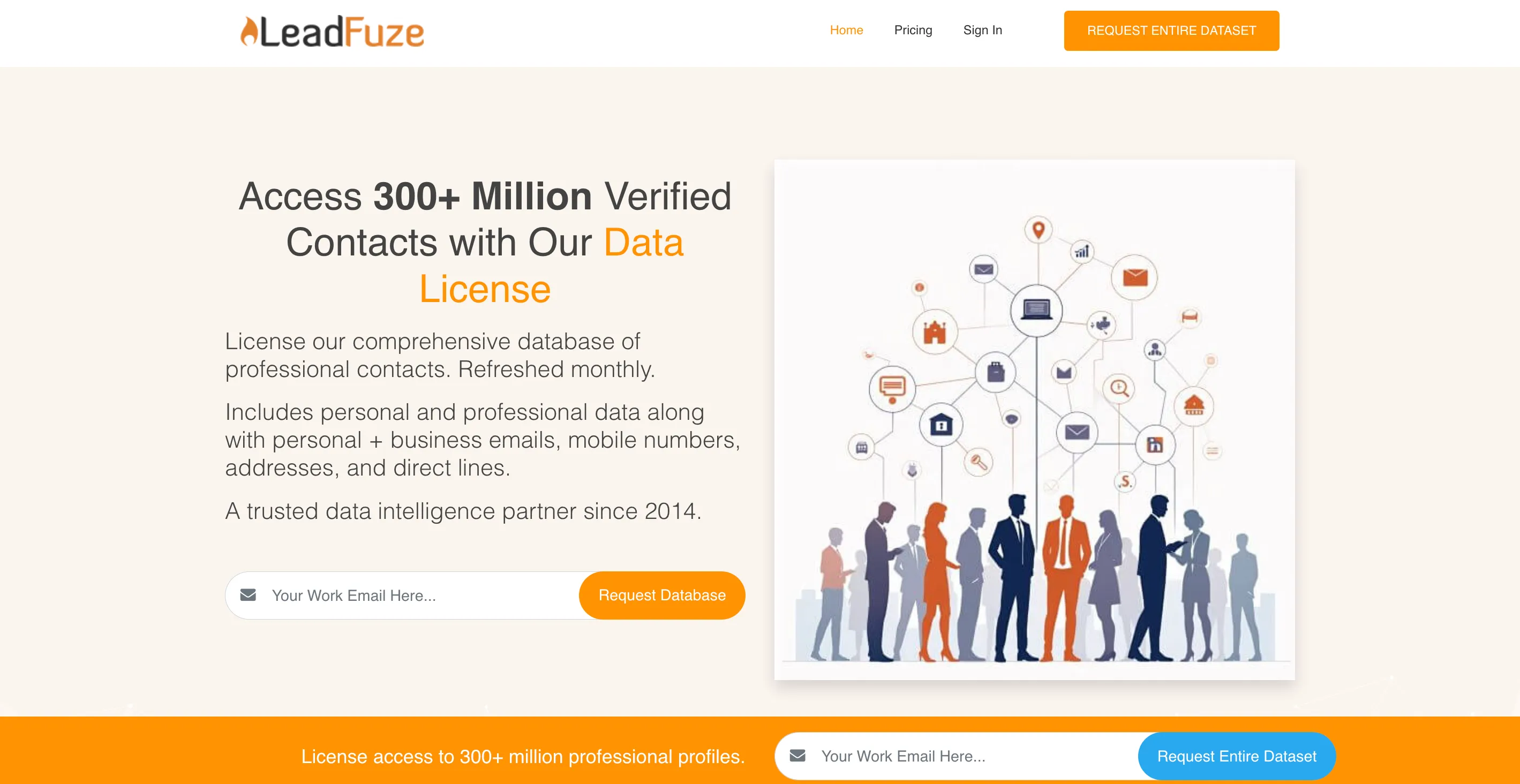
LeadFuze automates list building for sales and recruiting with filters for role, industry, location, tech, and hiring signals. It verifies emails, de-duplicates against your CRM, and can stream contacts into outreach tools, saving researchers hours each week. Strengths include straightforward list setup, segmentation saved as repeatable searches, and options for both market-based and account-based targeting. Compared with enterprise data vendors it’s more budget-friendly, though coverage depth and freshness can vary by niche or geography. Pair it with verification and deliverability hygiene for best results, and align with your opt-in/compliance policies.
Best fit: SMB/mid-market sales and recruiting teams that value speed and affordability. Less ideal for enterprises that require exhaustive global coverage, advanced org charts, or on-platform sequencing/advertising.
Other notable lead generation software
21. Demio (Inbound + Outbound • Webinar-Led Growth)

Demio is a webinar platform for lead capture and education, supporting live, automated, and on-demand events. Marketers launch branded registration pages, automated reminders, and interactive sessions (polls, Q&A) that keep attendees engaged and qualified. Post-event analytics and integrations push attendance, questions, and engagement scores into your CRM/MAP for targeted follow-ups. Strengths include ease of setup, polished attendee experiences, and evergreen replays that keep generating leads after the live date. It’s not a full MAP or sequencer; think of Demio as the event engine inside your funnel. Results depend on content and promotion; plan landing pages, email sequences, and SDR follow-ups.
Best fit: B2B teams using webinars for education, product launches, or customer marketing. Less ideal if events aren’t part of your motion or you require complex virtual conference features beyond webinars.
22. SimpleTexting (Inbound + Outbound • SMS-Led SMB)
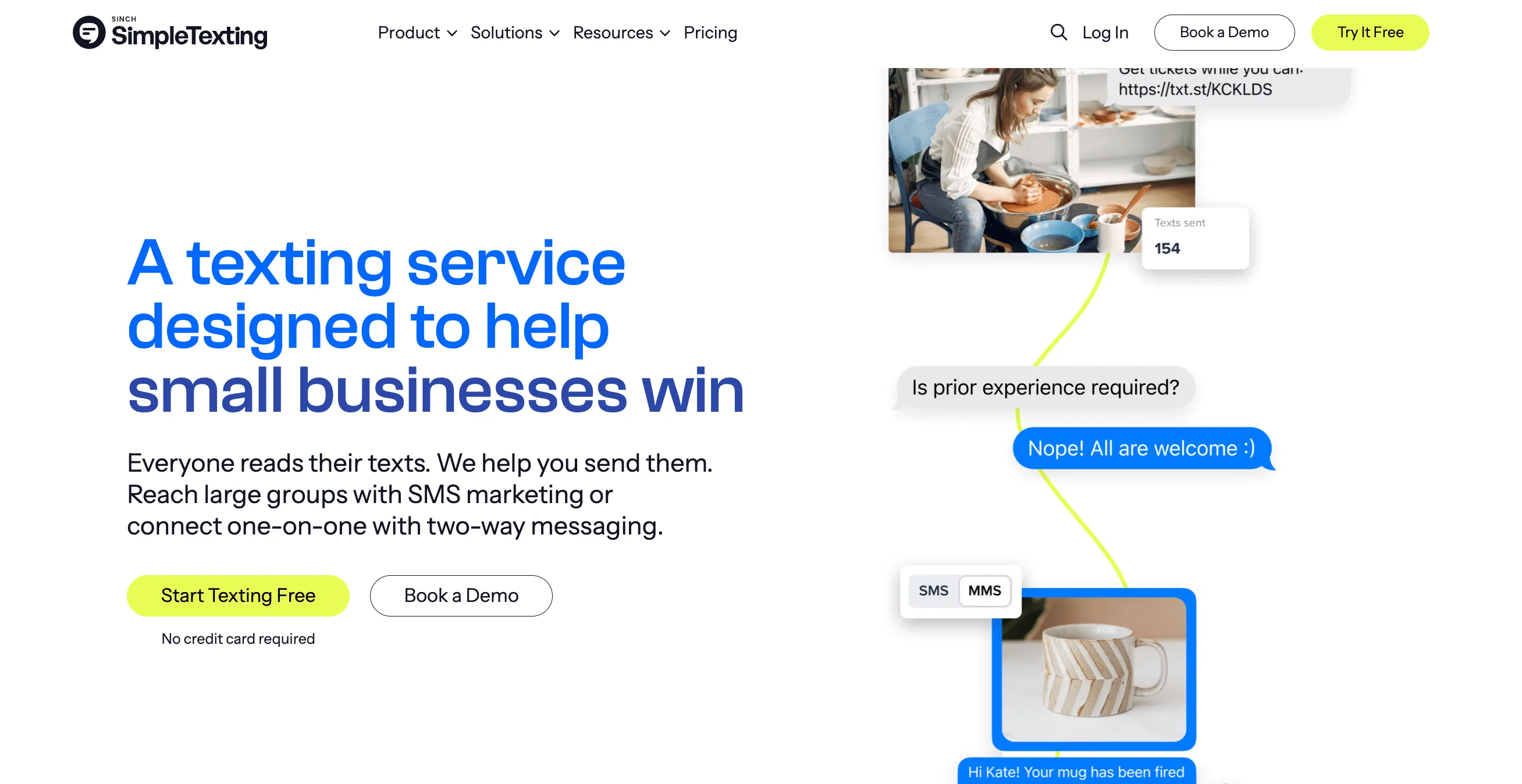
SimpleTexting enables SMS campaigns, two-way texting, and autoresponders so teams can reach leads where open rates are highest. Use keywords and short codes to capture subscribers, run polls/surveys for qualification, and trigger follow-ups based on replies. Strengths include speed, high deliverability for time-sensitive messages (reminders, promos), and approachable pricing for local and SMB use. Compliance is critical; build clear opt-in flows and honor opt-outs to meet regulations. SMS is concise by nature; pair it with landing pages or email for richer storytelling.
Best fit: SMBs, local services, and event-driven businesses that benefit from immediate engagement. Less ideal if your audience prefers long-form content or operates in regions with strict messaging limits and costs that reduce ROI.
23. Mailchimp (Inbound • SMB / Mid-Market Email Nurture)
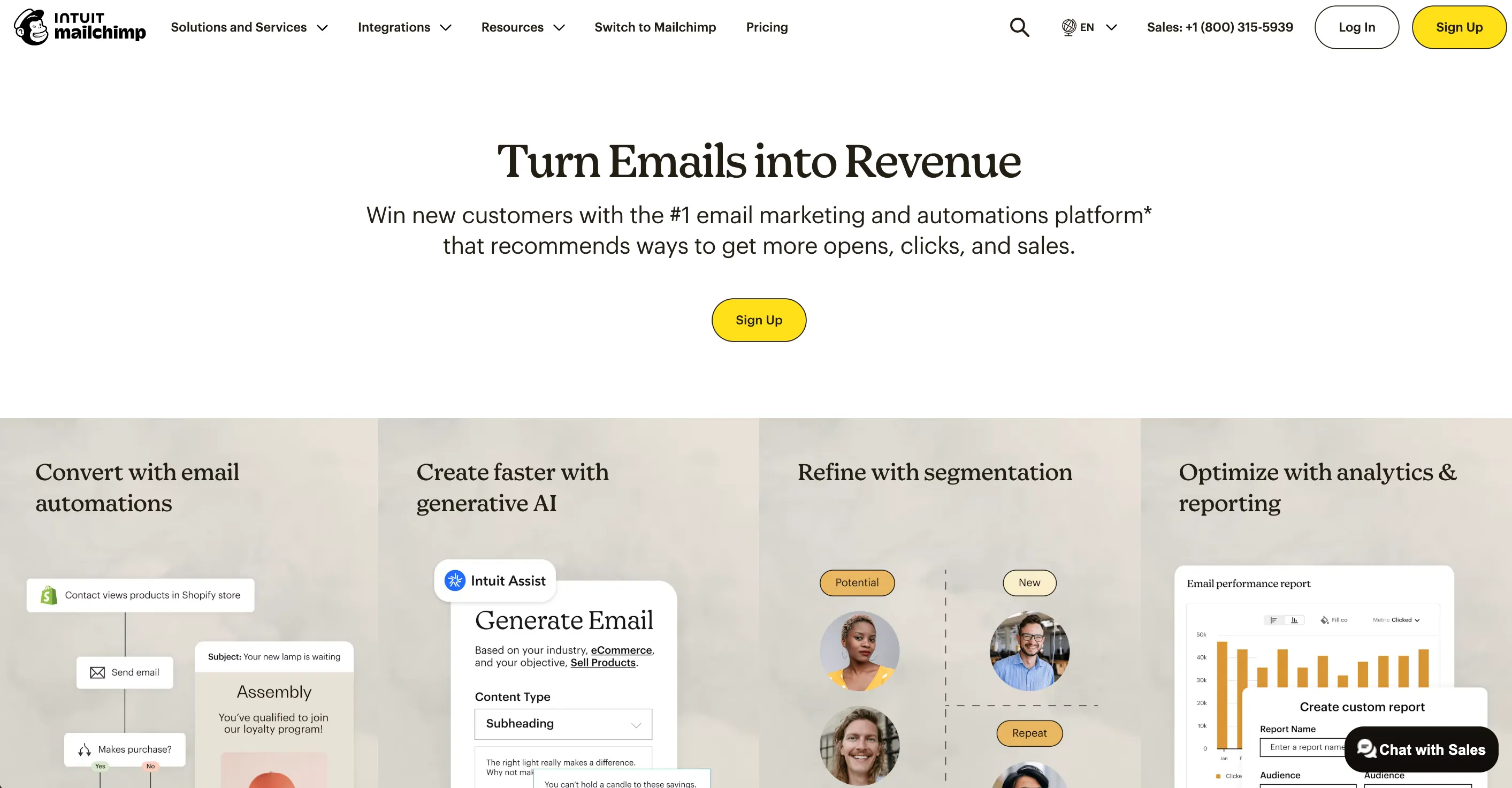
Mailchimp provides email marketing, basic automation, forms, and lightweight landing pages to nurture leads affordably. Strengths include ease of use, templates, and broad integrations that let small teams stand up newsletters, drips, and simple lead magnets fast. Over time, features expanded to include audience segmentation, creative assistance, and transactional add-ons, enough for many growing businesses. Compared to enterprise MAPs, automation depth, multi-channel orchestration, and attribution are lighter; contact-based pricing can rise with list growth. Mailchimp works best as a dependable, approachable ESP at the core of an SMB nurture program, paired with capture tools and CRM.
Best fit: SMBs and mid-market teams that want reliable email and simple automations without heavy setup. Less ideal for complex ABM, granular revenue attribution, or advanced, cross-channel personalization.
Final thoughts
11x for lead gen, simplified. At 11x, we turn lead signals into booked meetings by pairing AI-driven enrichment and prioritization with coordinated outreach across email, LinkedIn, and ads, then syncing everything back to your CRM automatically. The result is less manual busywork and more qualified conversations, faster.
Want to see it in action? Book a quick 11x demo and get an interactive walkthrough of how we operationalize your lead gen end-to-end.
Frequently Asked Questions
Lead gen software identifies, captures, and qualifies prospects, then routes them for follow-up. Typical flow: (1) capture interest via forms, landing pages, chat, events, or ads; (2) enrich and validate records (company, role, contactability); (3) score and segment based on fit and intent; (4) automate next steps (nurture emails, SDR tasks, ads, scheduling); and (5) report on pipeline impact so you can reinvest in what works. The best systems close the loop by learning from outcomes (meetings, opportunities, wins) to improve targeting over time.
Consider a tool if any of these are true: you miss SLAs on form/chat responses; leads leak between systems; you rely on spreadsheets for routing; you can’t see which campaigns create pipeline; reps spend more time researching than selling; or you plan to scale outbound/inbound volume. Very small teams with low volume can start manually, but once you hit multi-channel acquisition or >50–100 new leads/month, software prevents bottlenecks and inconsistencies.
What features should I look for when choosing a lead generation tool?
- Capture & conversion (inbound): landing pages, forms, chat, A/B testing, exit-intent, progressive profiling.
- Prospecting & outreach (outbound): list building, verification, sequencing, deliverability controls, account targeting.
- Data & qualification: enrichment, de-dupe, validation, fit/intent scoring, ICP rules.
- Automation & orchestration: workflows, alerts, scheduling, campaign triggers across email, ads, and sales tools.
- Analytics & attribution: funnel/pipeline reporting, cohort views, lift/ROI analysis.
- Integrations: native CRM/MAP/SEP connectors, webhooks, CDP/warehouse support.
- Governance: permissions, audit trails, consent management (GDPR/CCPA), data retention controls.
- Scalability & TCO: pricing aligned to contacts/events/users, clear limits, and admin guardrails.
Quality improves through validation (catching bad emails/duplicates), enrichment (firmographics/technographics for better targeting), scoring (prioritizing ICP-fit + high-intent behaviors), and routing (right rep, right message, right time). Engagement signals (content consumed, pages viewed, events attended) refine qualification, while closed-loop feedback from CRM outcomes continuously tunes scoring and audiences, so reps work fewer, better leads.
Yes, verify native connectors for your CRM, marketing automation, sales engagement, calendar/scheduling, and ad platforms. Look for bi-directional sync, field-level mapping, webhooks, and support for CDPs/data warehouses if you centralize data.
Test a few critical workflows (form → CRM → routing; campaign → attribution) in a sandbox, confirm SSO/role permissions, and check API rate limits so scale won’t break your syncs. Integration depth is often the difference between a shiny dashboard and real pipeline lift.



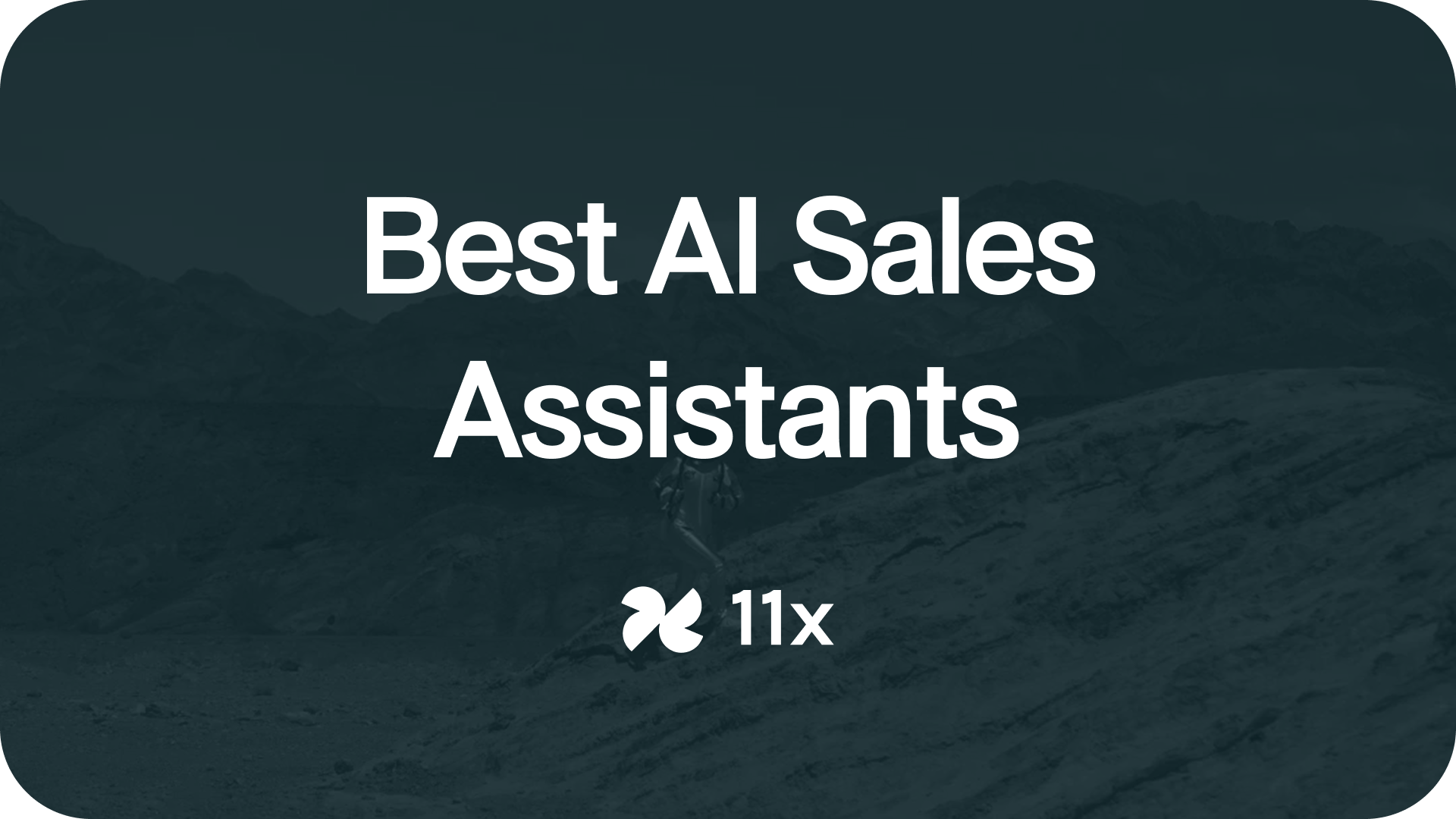
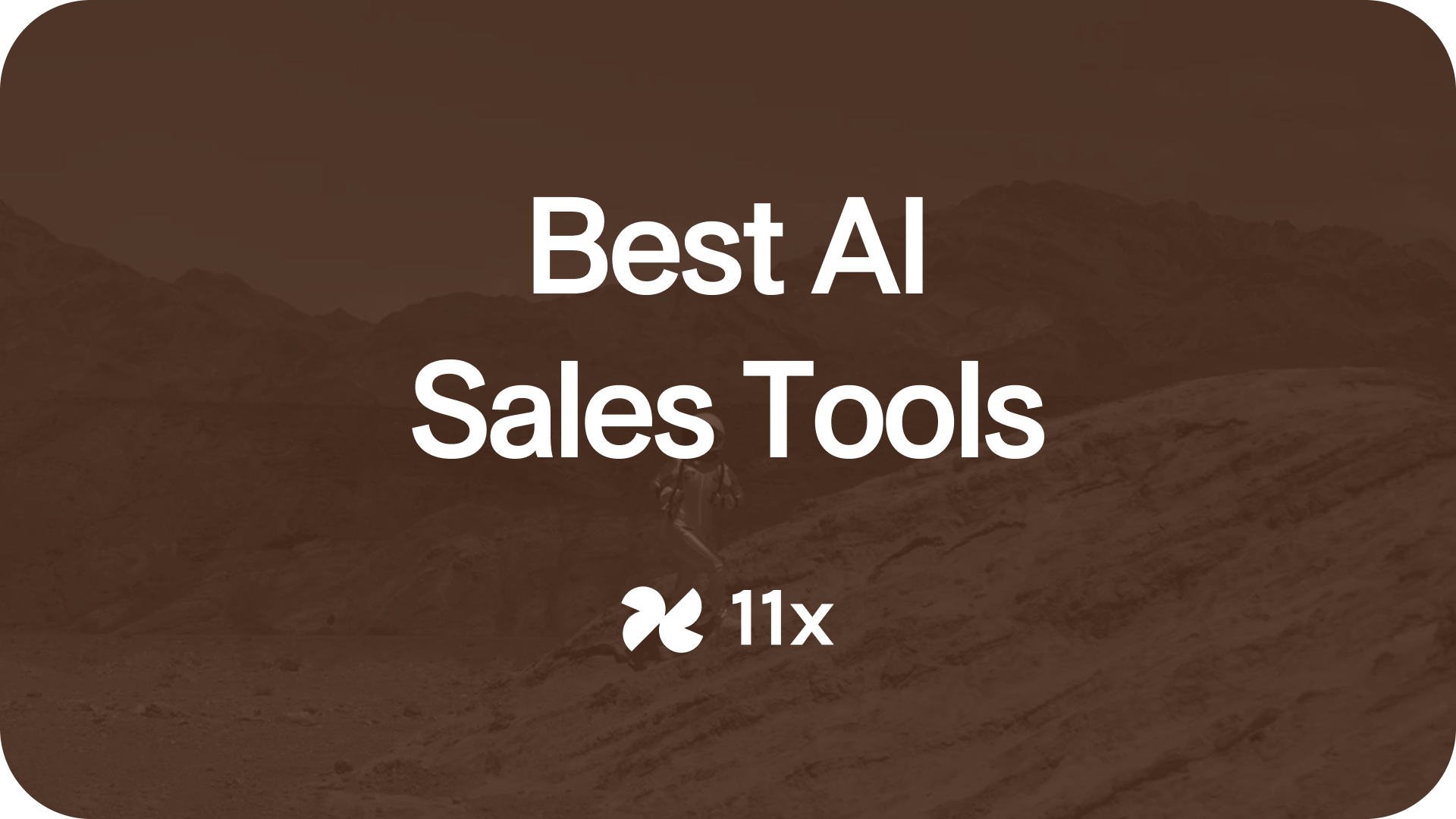
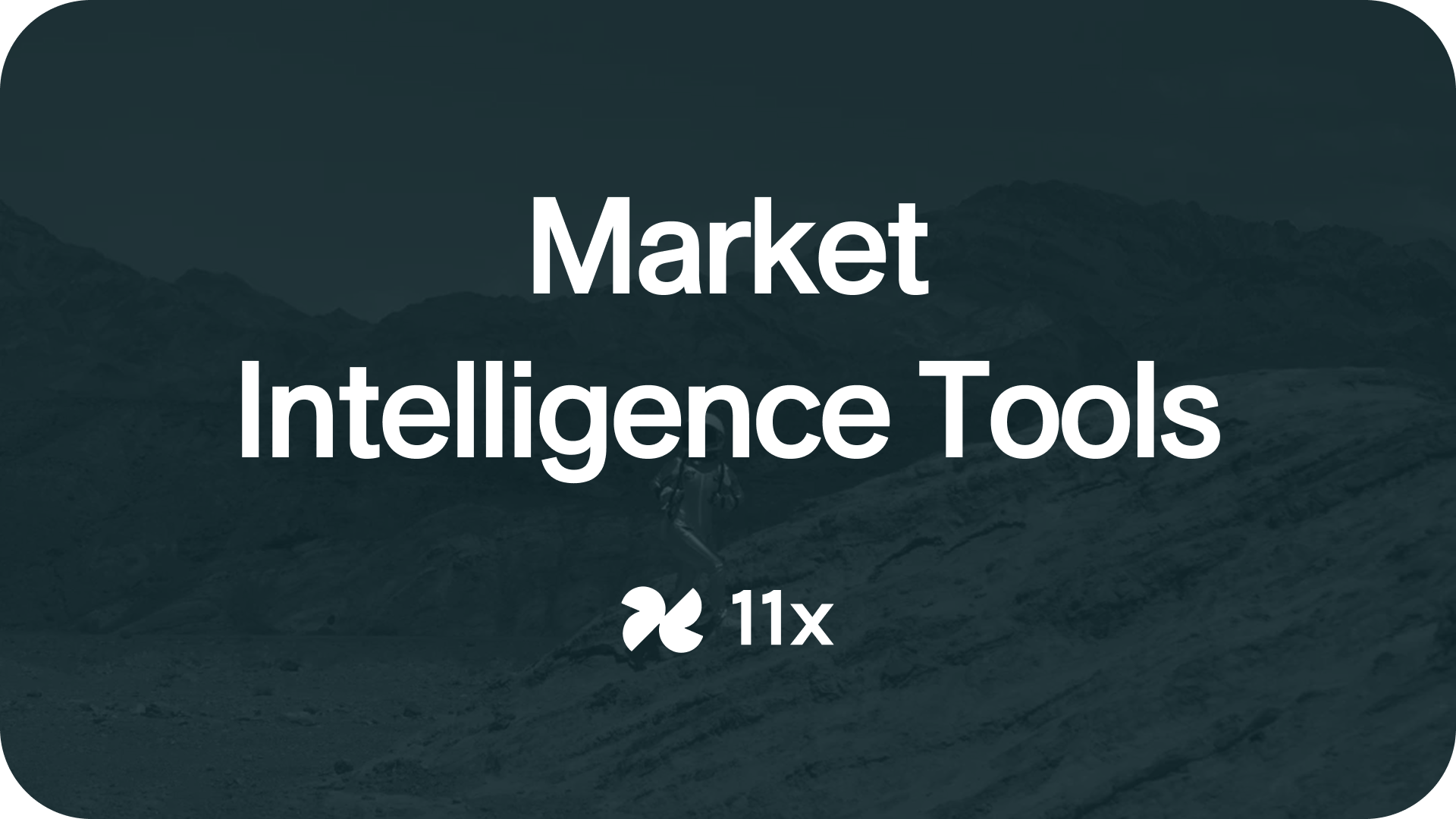
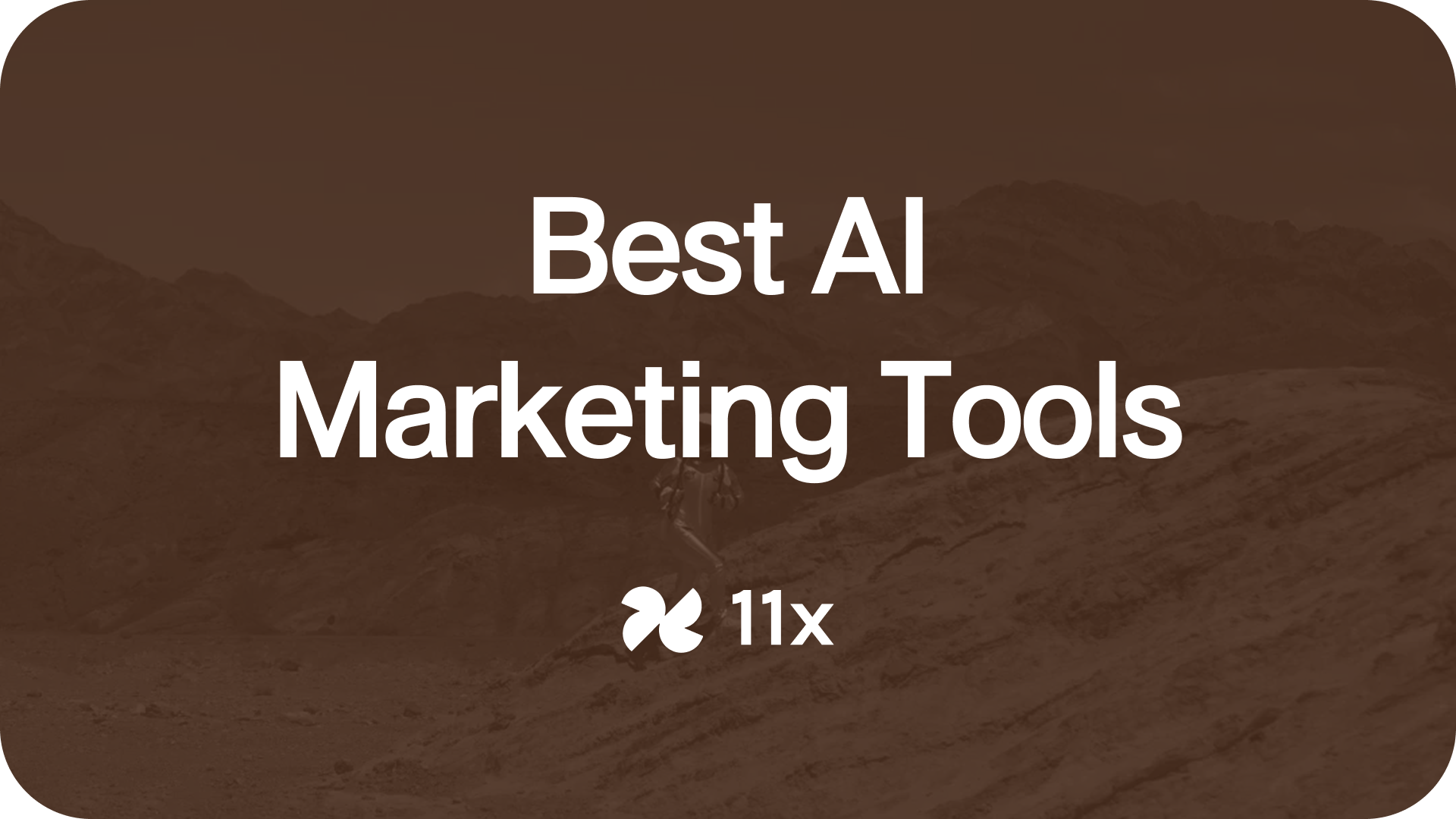
.png)